Scratch
Coders learn coding concepts and practices by creating interest-driven coding projects using a block-based platform.
Filter by:
Experience Year
Experience Quarter
Practice
Concepts
Length

#1 Animate Your Name 🟥
Experience: 1st year, 1st quarter
In this introductory project, coders create their name using letter sprites and use code to animate each letter when clicked. The purpose of this project is to introduce coders to creating simple algorithms using a small number of blocks in Scratch.
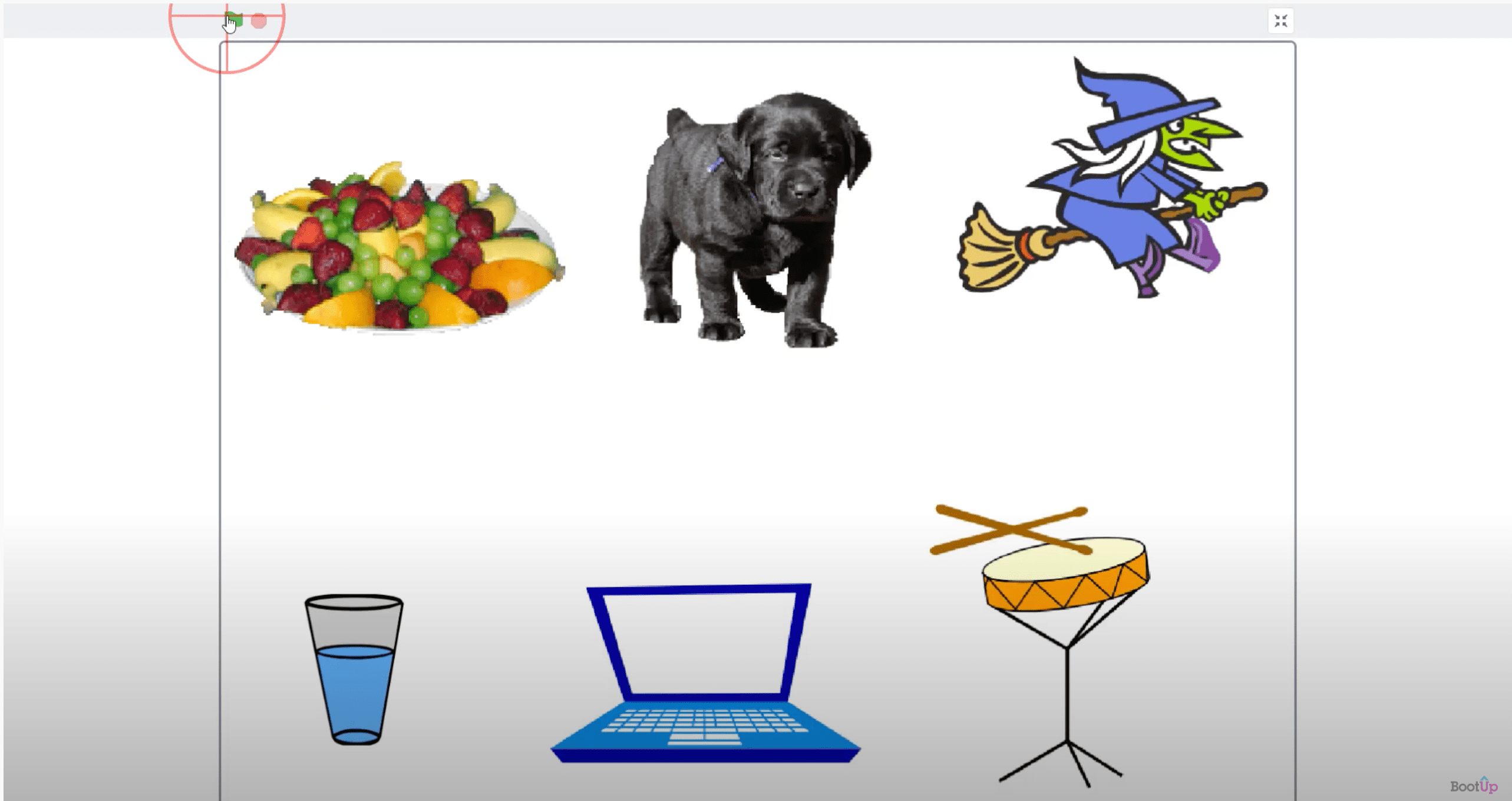
#2 Interactive Collage 🟥
Experience: 1st year, 1st quarter
Coders create an interactive collage that explains what they like when a sprite is clicked. The purpose of this project is to reinforce understanding of the previously introduced blocks while introducing the Say block and further getting to know the coders you work with.

#3 Jump Scare Slideshow 🟥
Experience: 1st year, 1st quarter
Coders learn how to create a jump scare slideshow as a fun prank. The purpose of this project is to introduce using control blocks to cycle through backdrops and eventually create a jump scare.
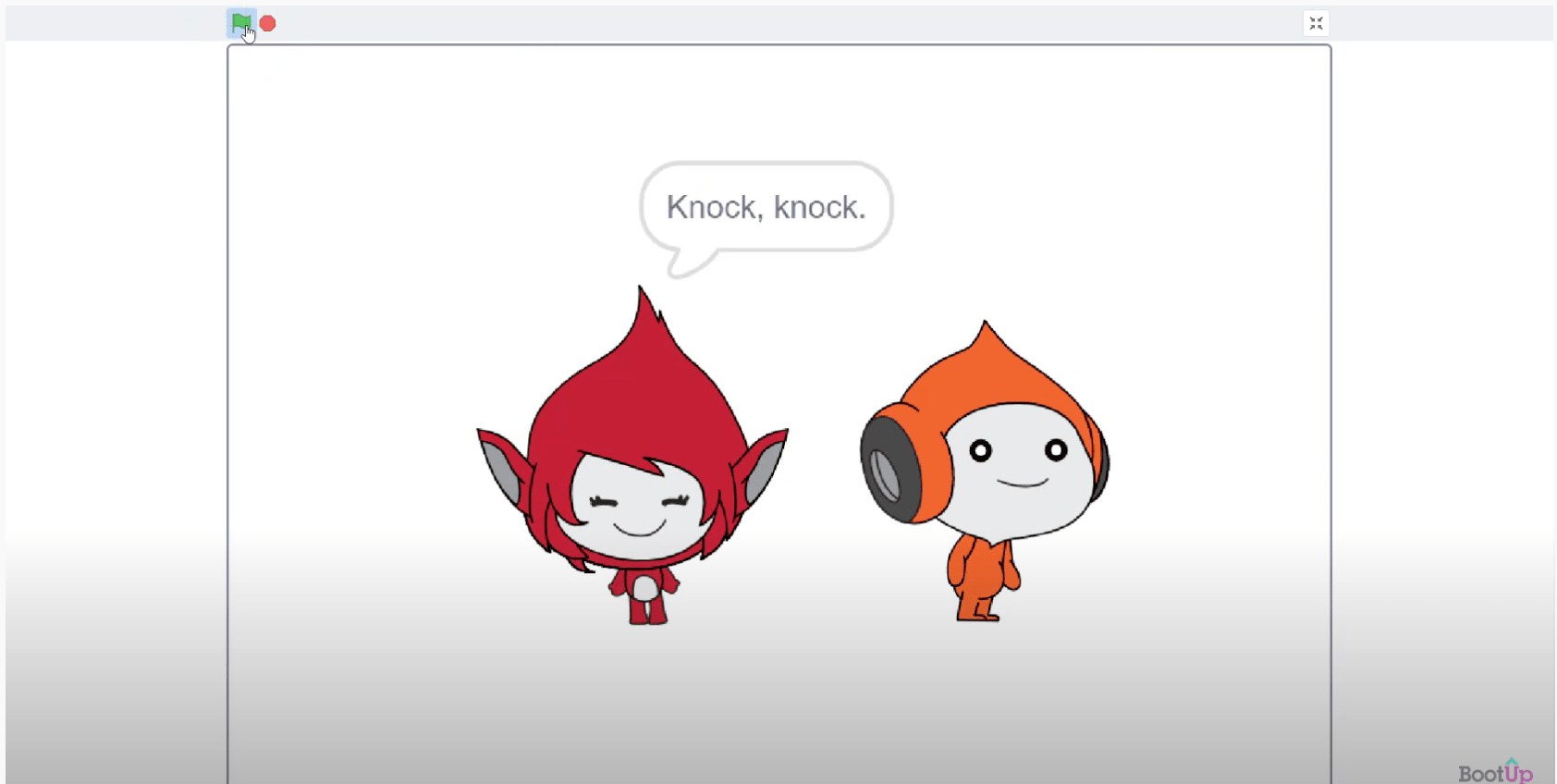
#4 Knock, Knock 🟥
Experience: 1st year, 1st quarter
Coders will unscramble a knock knock joke, then create their own jokes using two sprites. The purpose of this project is to introduce using wait blocks to simulate two sprites talking with each other.
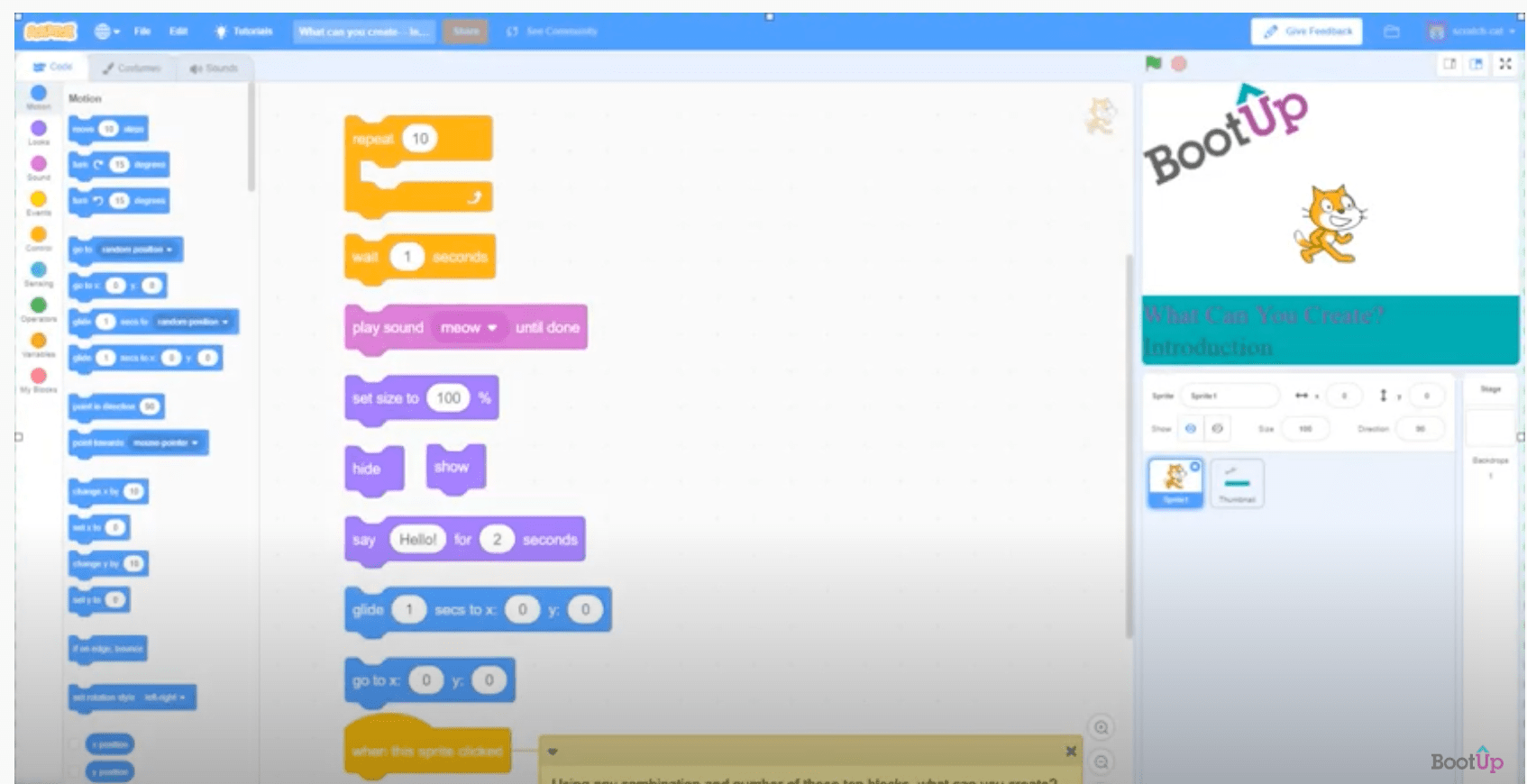
#5 What Can You Create? Introduction 🟥
Experience: 1st year, 1st quarter
This challenge asks coders to use a limited selection of block types within an unlimited number of sprites to create something interesting. The purpose of this challenge is to encourage coders to think creatively about block combinations to better understand algorithmic sequences.
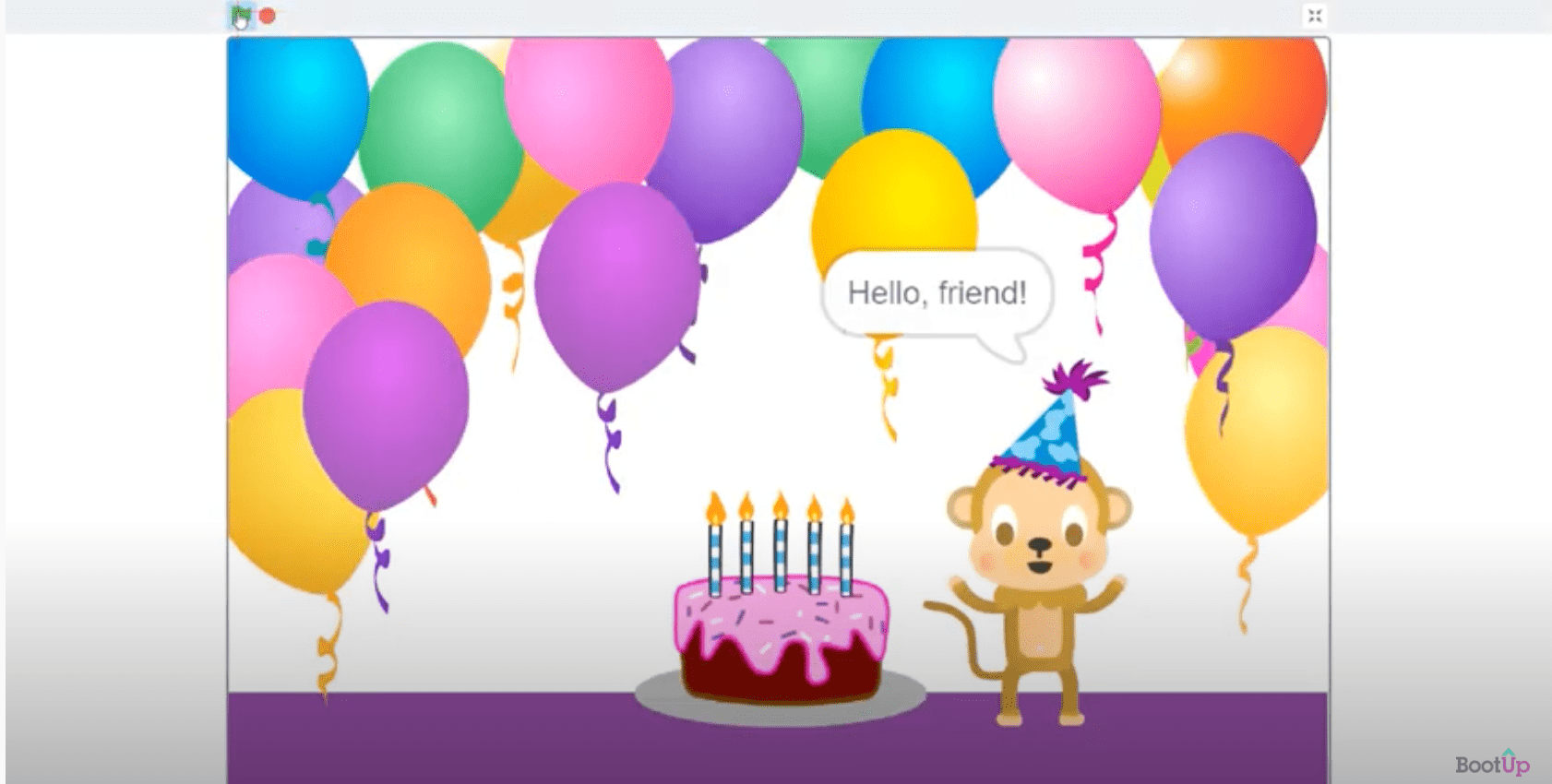
#6 Animate Card 🟥
Experience: 1st year, 1st quarter
Coders apply their understandings from previous projects to create an animated card. The purpose of this project is to reinforce understandings from previous projects within a new context. This project can be repeated throughout the year for various events, holidays, birthdays, to give thanks, or as an act of kindness.
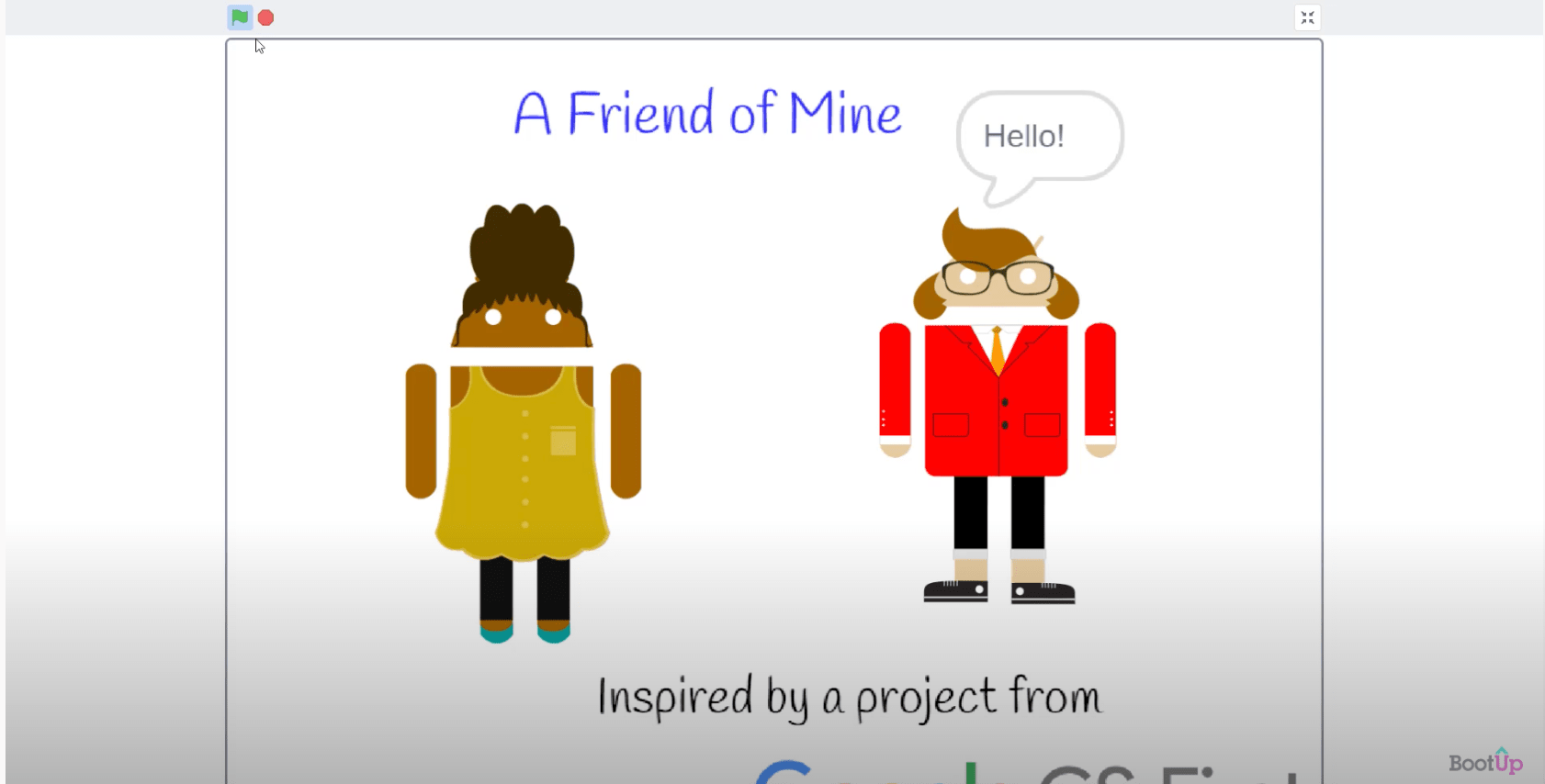
#7 A Friend of Mine 🟥
Experience: 1st year, 1st quarter
Coders learn how to remix a project that introduces a friend, historical figure, or imaginary person. The purpose of this project is to introduce coders to remixing projects and to build on the understandings from previous projects.
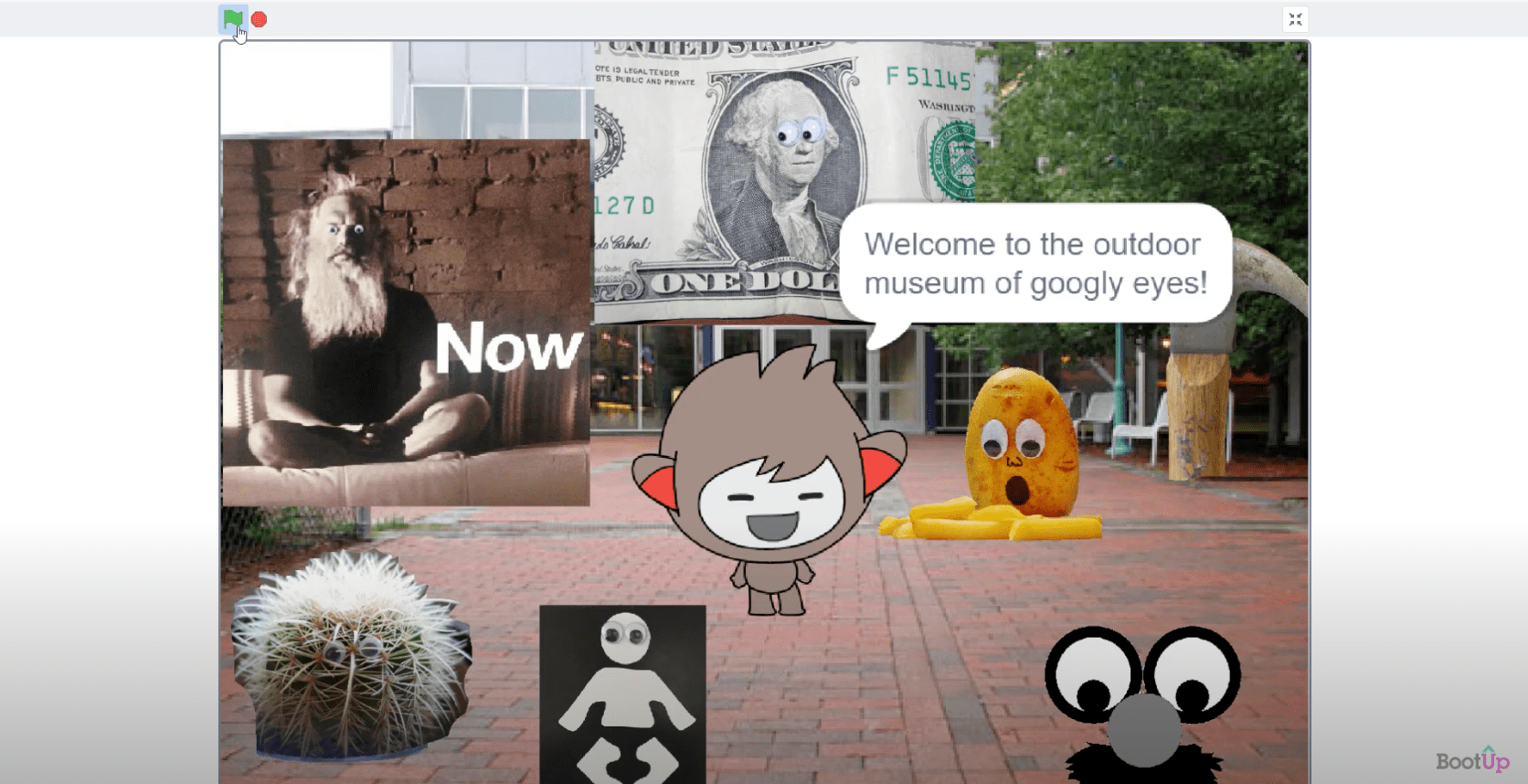
#8 Virtual Museum 🟥
Experience: 1st year, 1st quarter
Coders collaboratively research and create a virtual museum that responds when a user clicks on a sprite. The purpose of this project is to review understandings from the previous projects and prepare coders for the following project in the suggested sequence (Interactive Art).
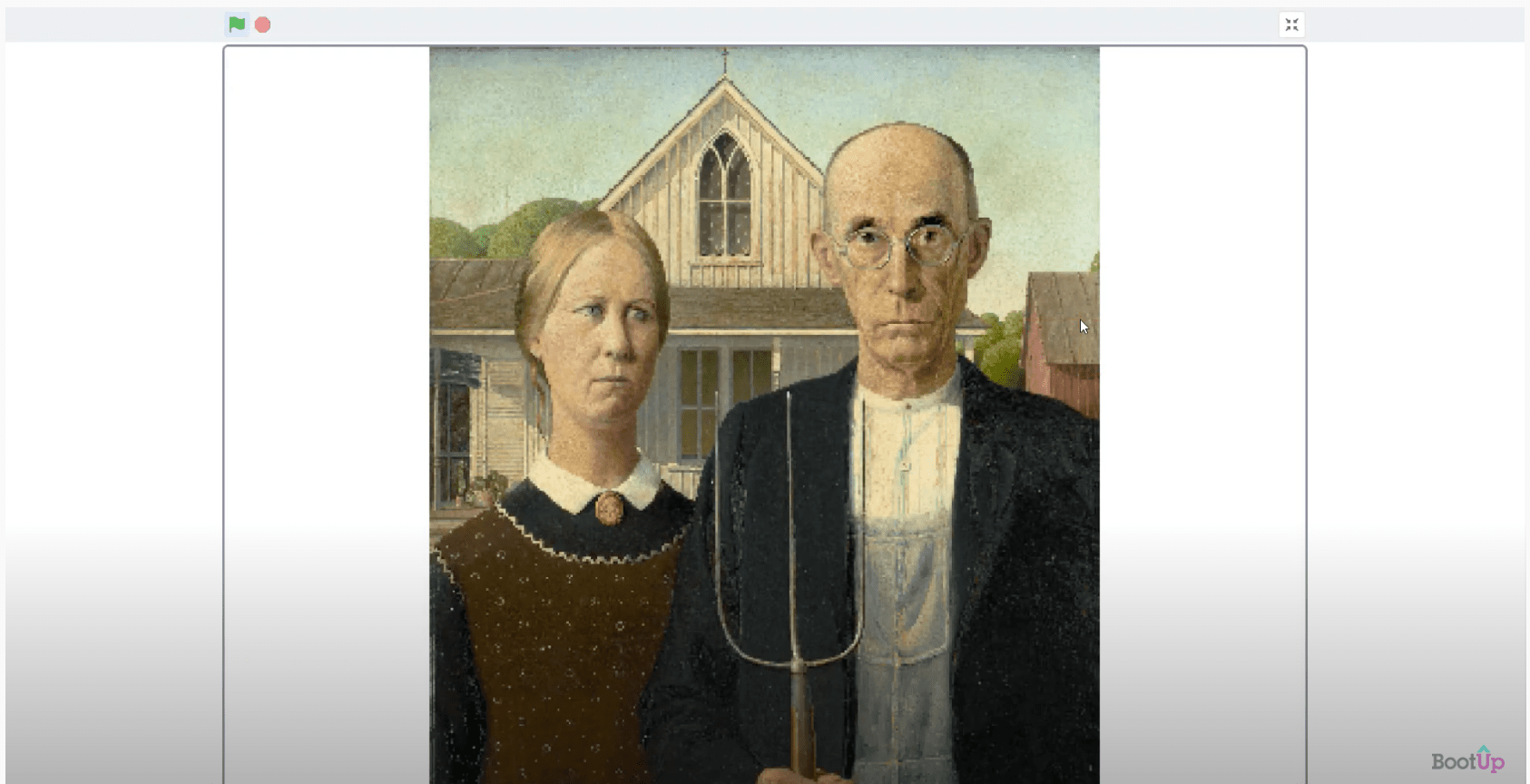
#9 Interactive Art 🟥
Experience: 1st year, 1st quarter
Coders create an interactive painting that responds when different parts are clicked. The purpose of this project is to introduce duplicating and editing a sprite, as well as applying previously used blocks in a new context.
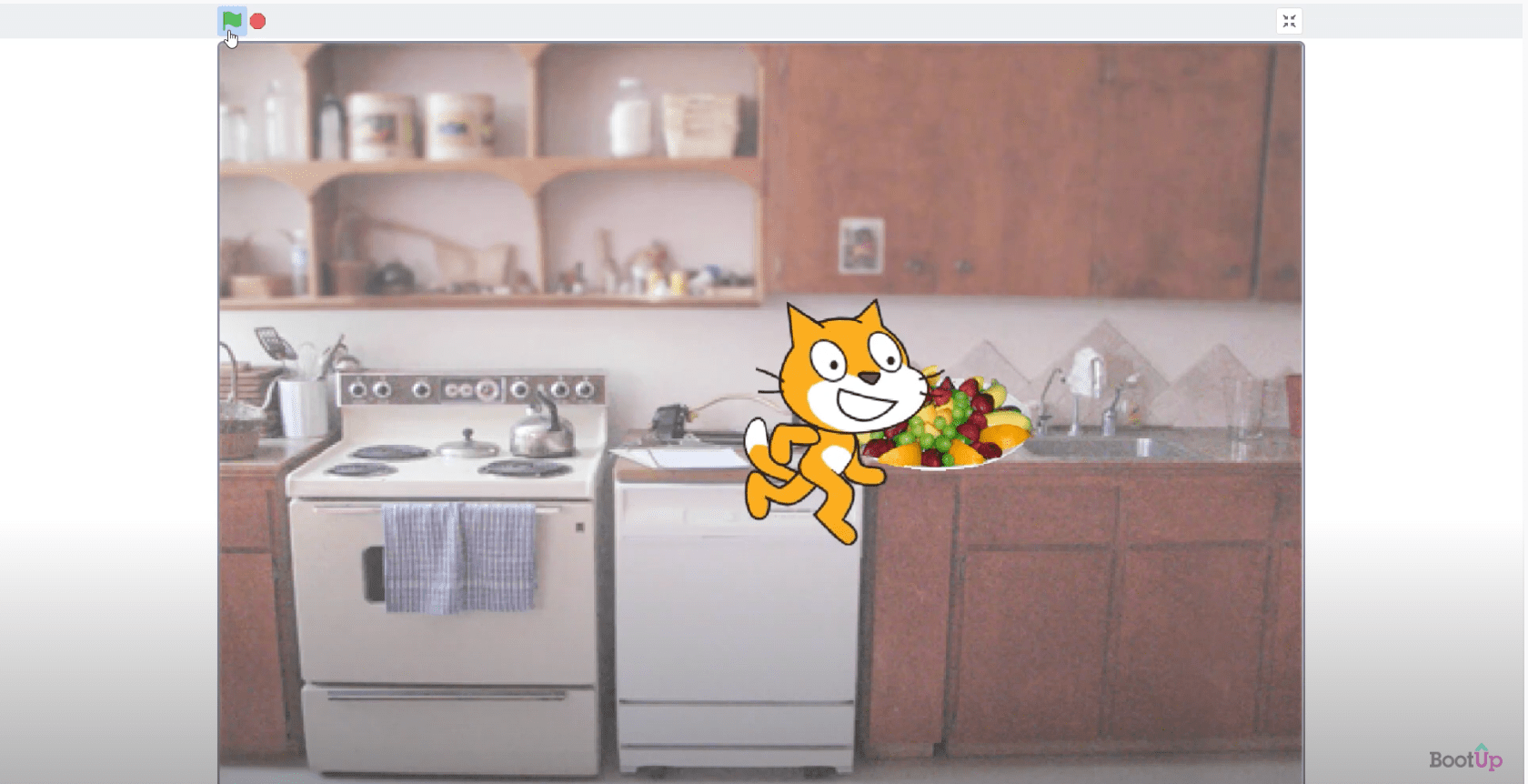
#10 Story About Me 🟥
Experience: 1st year, 1st quarter
Coders select from a variety of starter prompts, storyboard their story, then code a story about themselves. The purpose of this synthesis project is to storyboard a project and then apply their understandings into a project of interest.
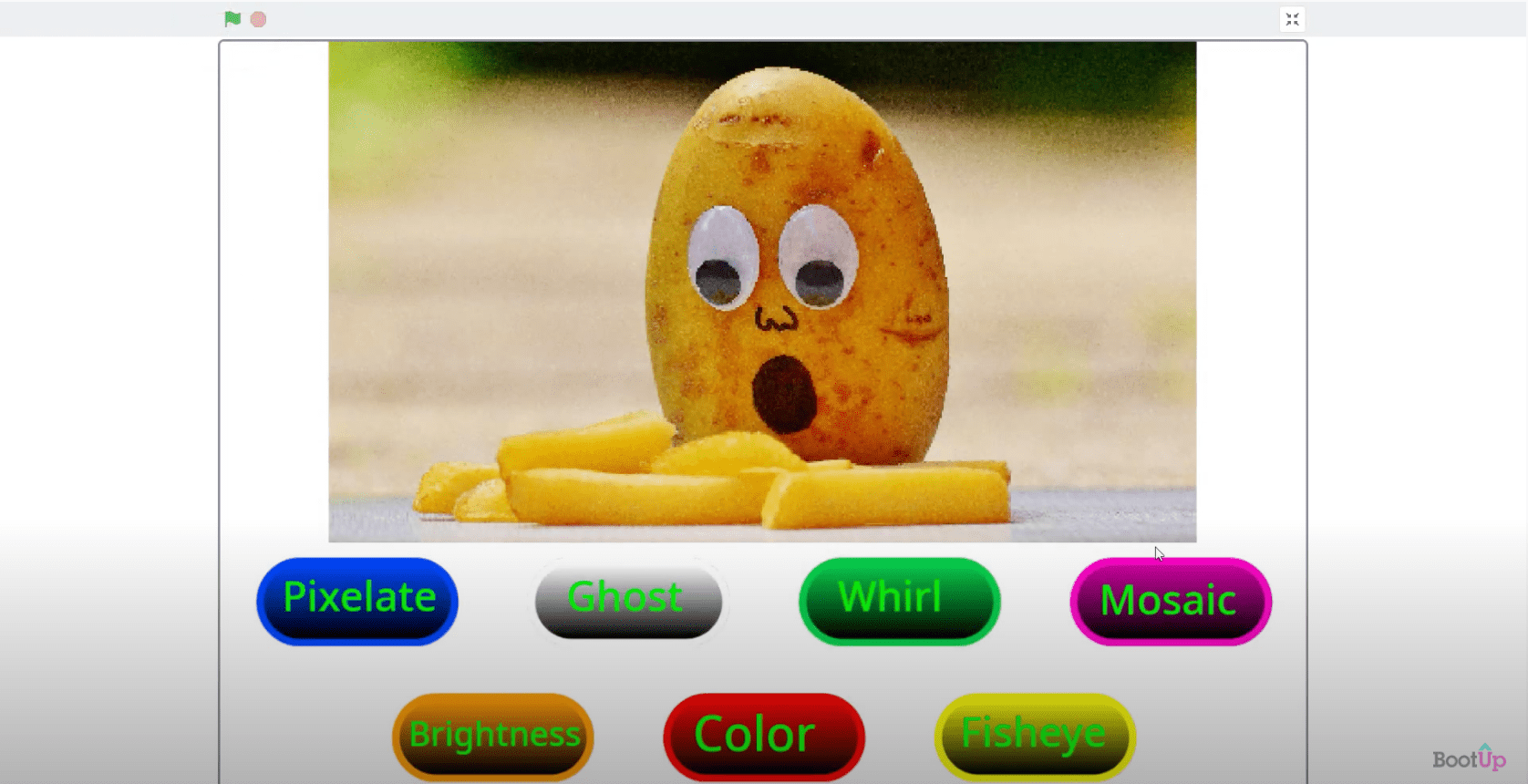
#11 Photo Editor 🟥
Experience: 1st year, 2nd quarter
Coders create a photo editor app that alters the appearance of a photo when various buttons are clicked. The purpose of this project is to introduce how to broadcast and receive messages.

#12 Photo Booth 🟧
Experience: 1st year, 2nd quarter
Coders apply their understandings of broadcasting and receiving messages to create an interactive photo booth. The purpose of this project is to reinforce understandings of messages through a remix project focusing on adding user controls.
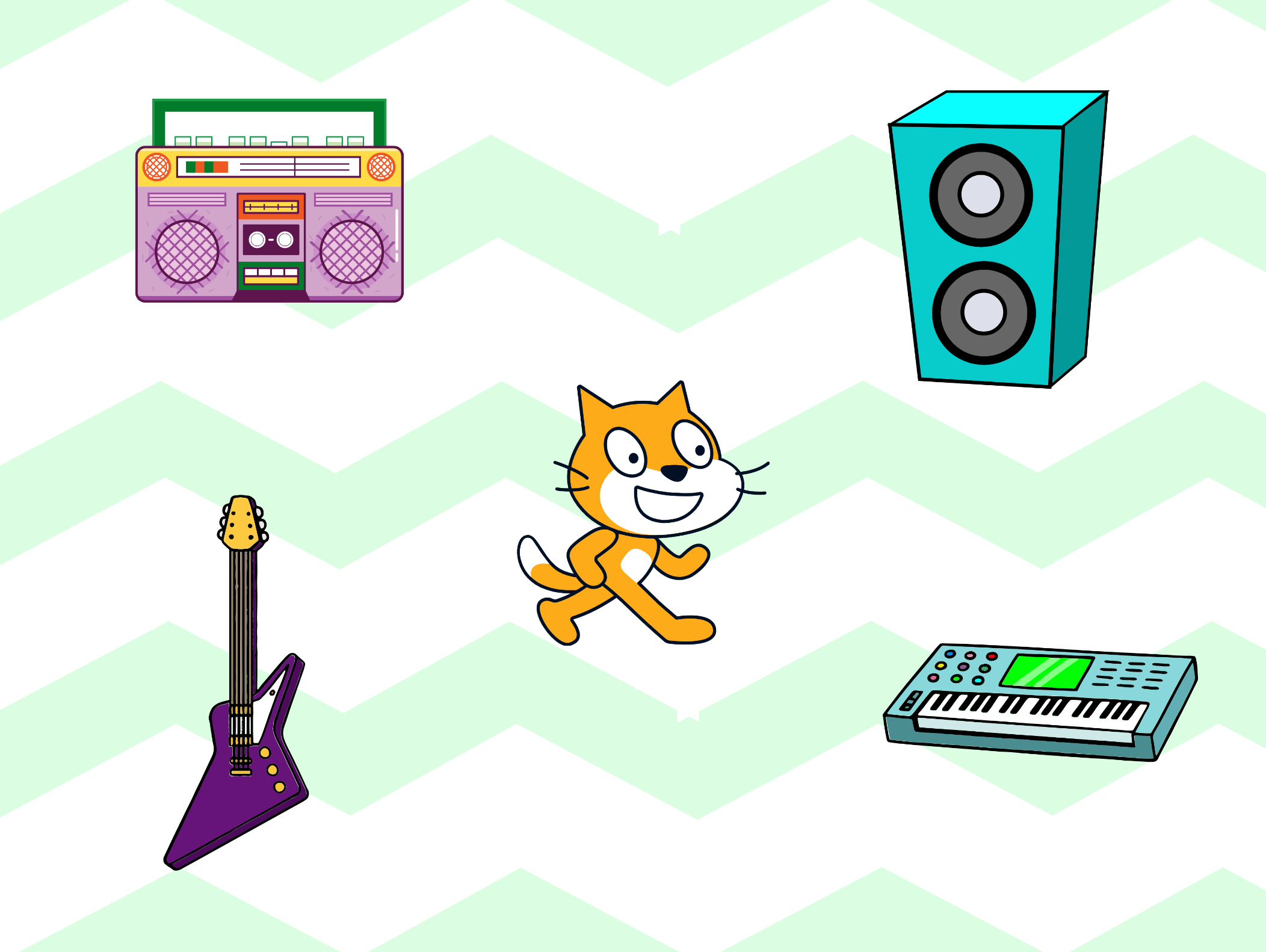
#13 Beatbox Machine 🟧
Experience: 1st year, 2nd quarter
Coders create a project that allows them to make music with their faces when certain keys on a keyboard are pressed. The purpose of this project is to introduce triggering algorithms with specific keyboard events.

#14 What Can You Create? Music 🟧
Experience: 1st year, 2nd quarter
This challenge asks coders to use a limited selection of block types within an unlimited number of sprites to create something musical. The purpose of this challenge is to encourage coders to think creatively about block combinations to better understand algorithmic sequences.
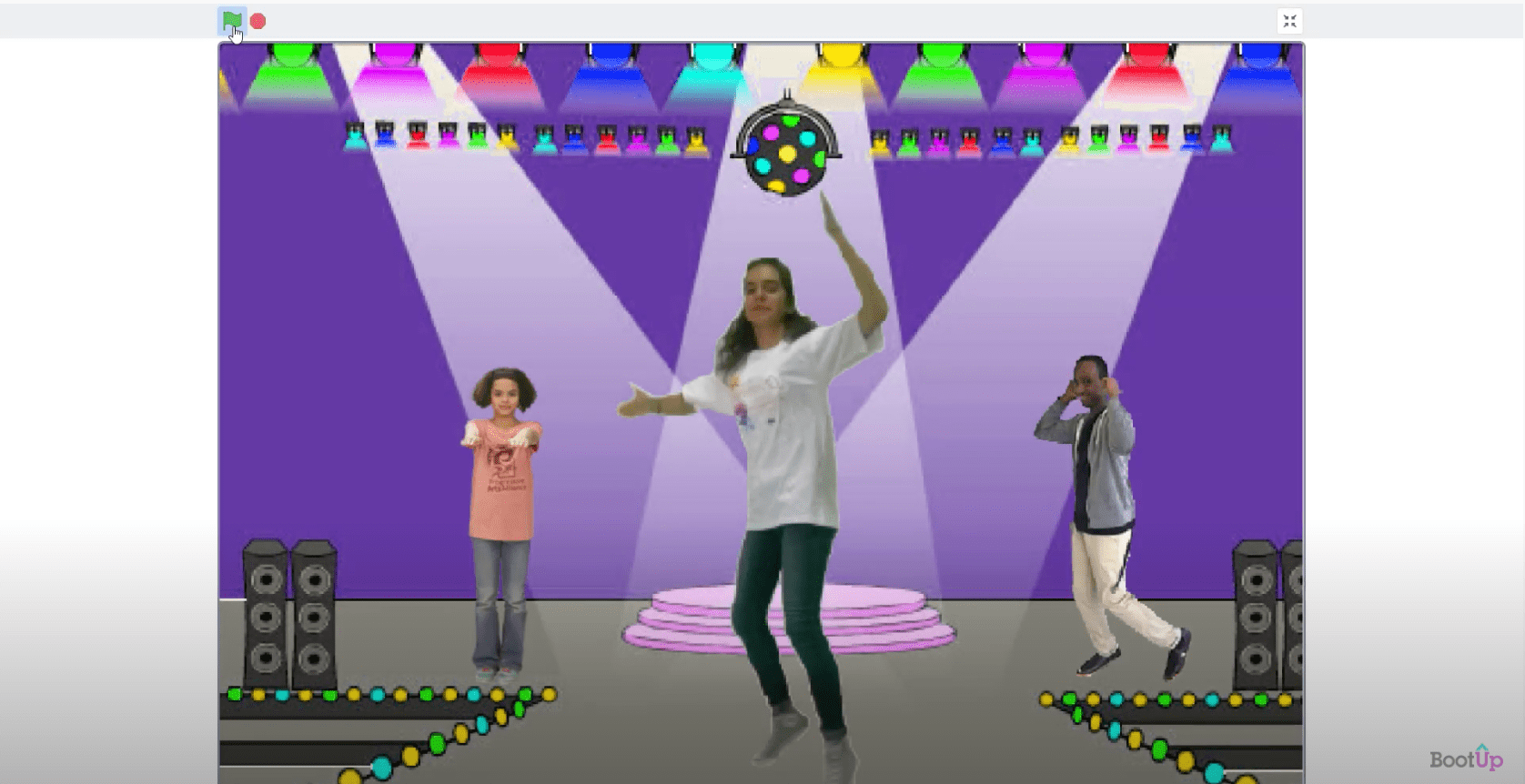
#15 Let's Dance 🟧
Experience: 1st year, 2nd quarter
Coders create a project that causes sprites to dance to repeated background music. The purpose of this project is to introduce timing algorithms to repeated music.

#16 Character Builder 🟧
Experience: 1st year, 2nd quarter
Coders learn how to design custom costumes to create a customized character builder for a selected theme. The purpose of this project is to reinforce understandings of messages while introducing new features in Scratch.
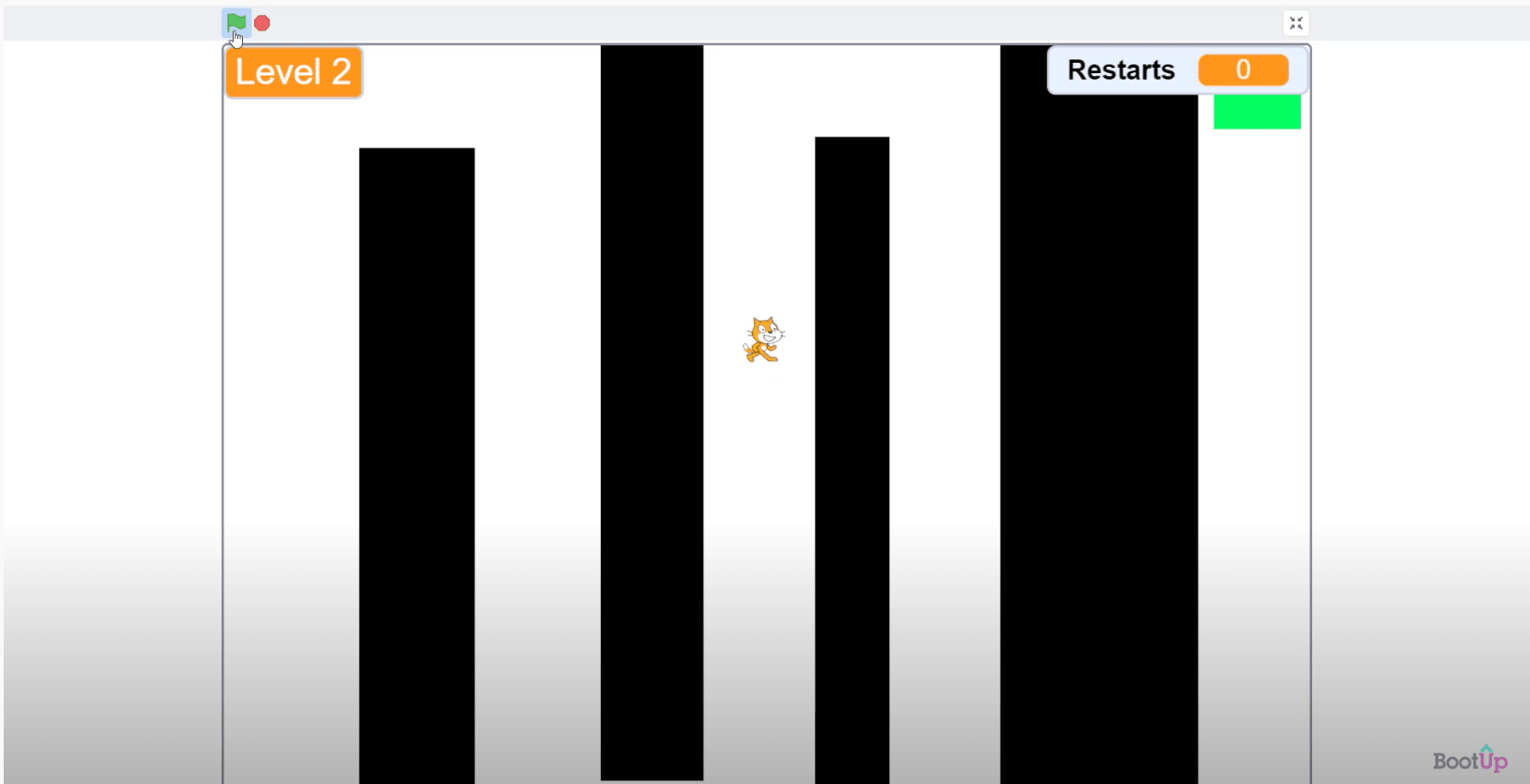
#17 An Amazing Maze Game 🟧
Experience: 1st year, 2nd quarter
Coders create a player controlled maze game with multiple, custom levels. The purpose of this project is to introduce conditional statements (if blocks) to create player controls, while reinforcing how to use the image editor to design mazes.
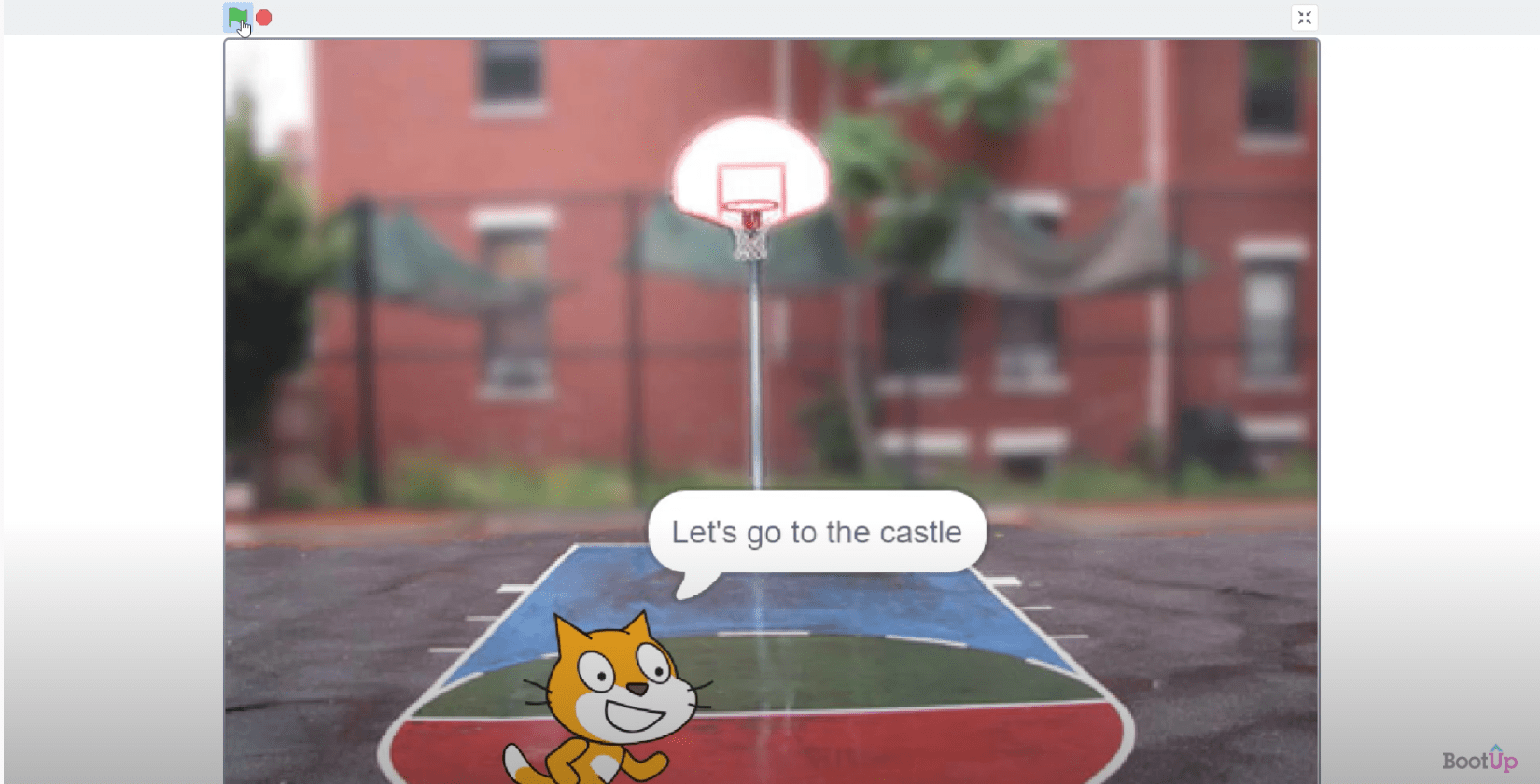
#18 Scenic Walk 🟧
Experience: 1st year, 2nd quarter
Coders create a scenic walk where a sprite walks between backdrops to describe or introduce each scene. The purpose of this project is to introduce the when backdrop switches to block to show and hide sprites on specific backdrops.
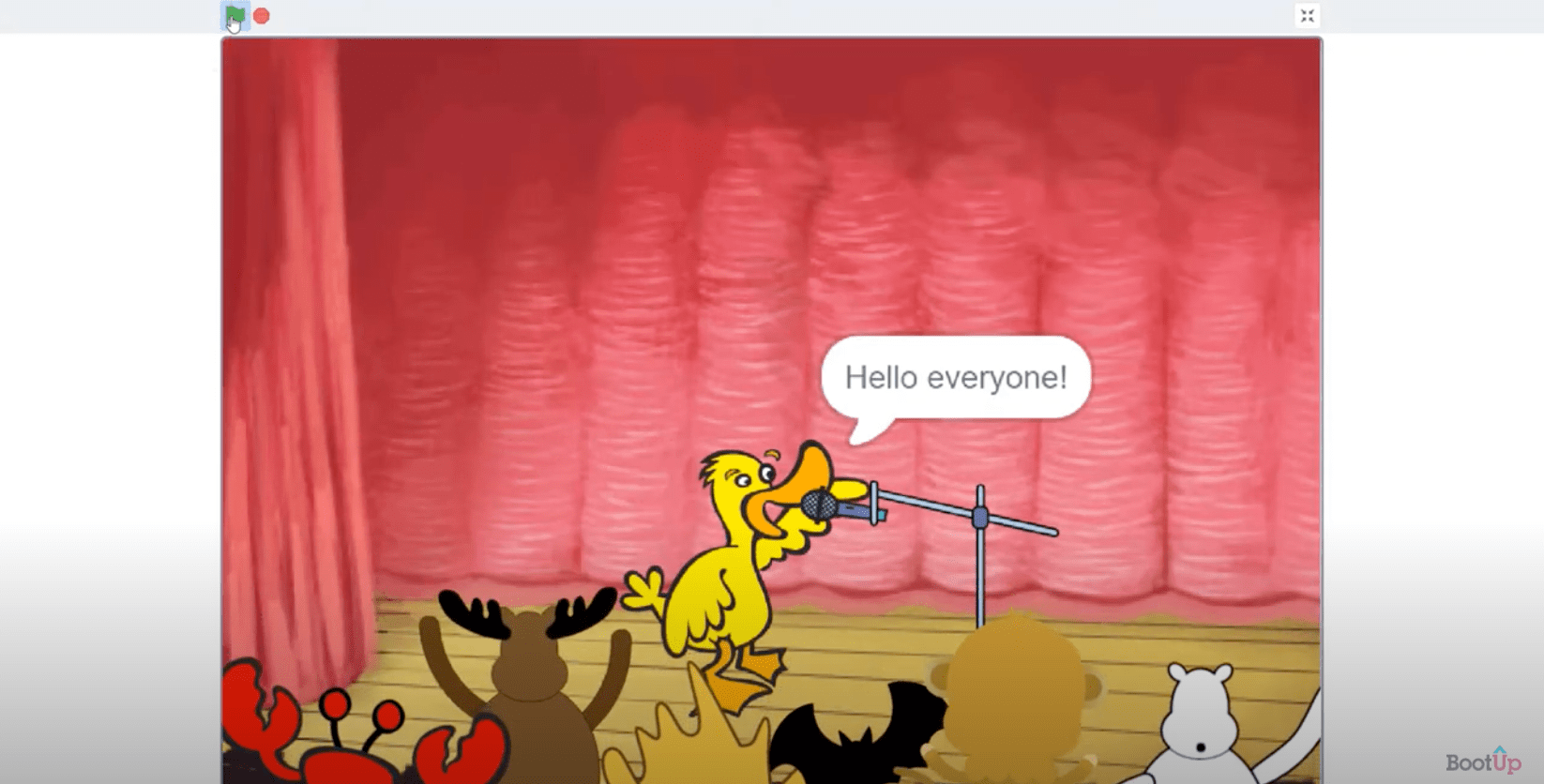
#19 Award Acceptance Speech 🟠
Experience: 1st year, 2nd quarter
Coders combine their understandings from previous projects to storyboard and create an award acceptance speech. The purpose of this project is to storyboard a project, apply their understandings into a project of interest, and learn a couple of new tools and blocks.
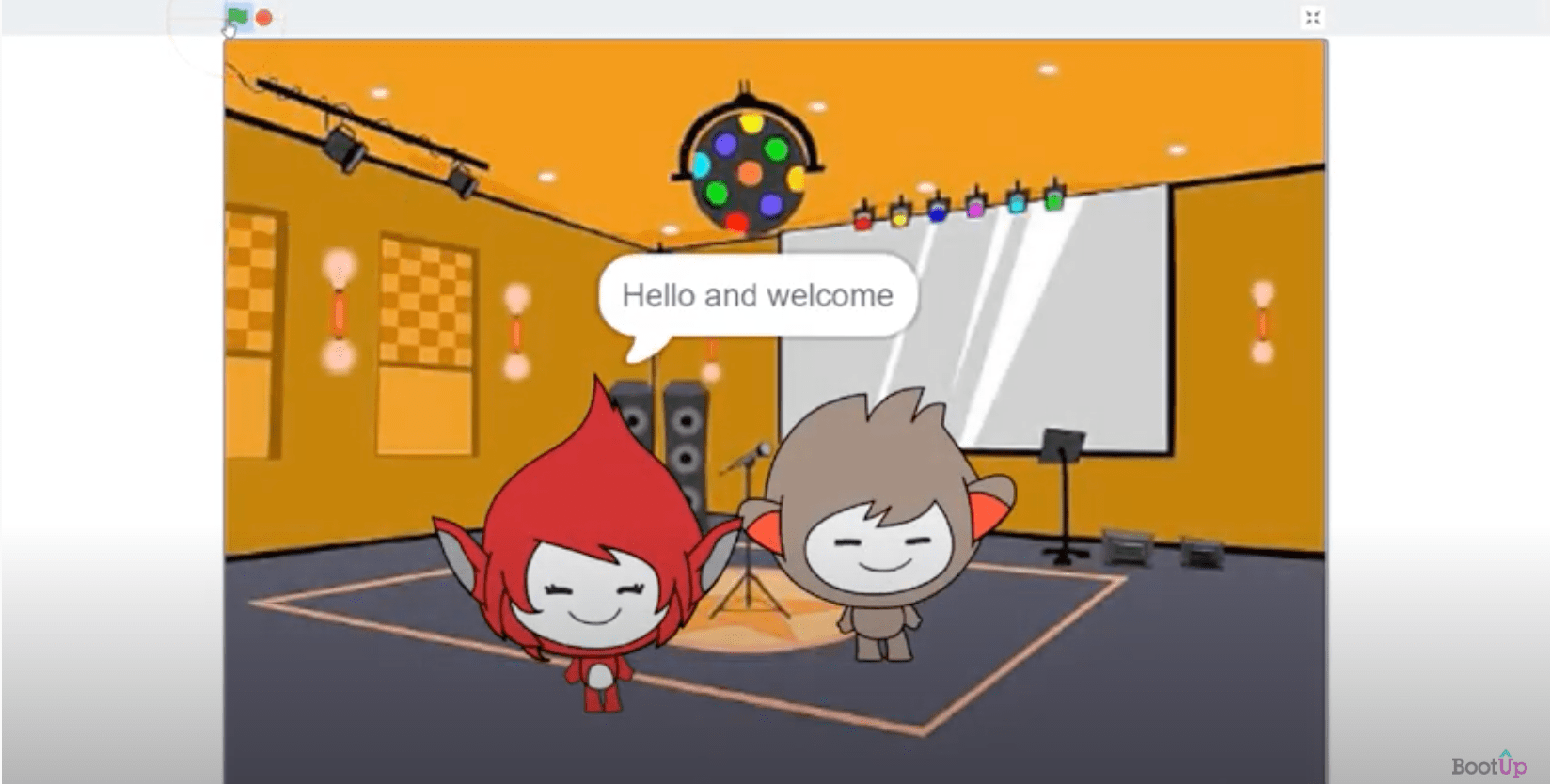
#20 Coder Interview 🟠
Experience: 1st year, 2nd quarter
Coders select from a variety of starter questions, storyboard their interview, then code an interview about what they learned in Scratch. The purpose of this synthesis project is to storyboard a project and then apply their understandings into a project of interest.
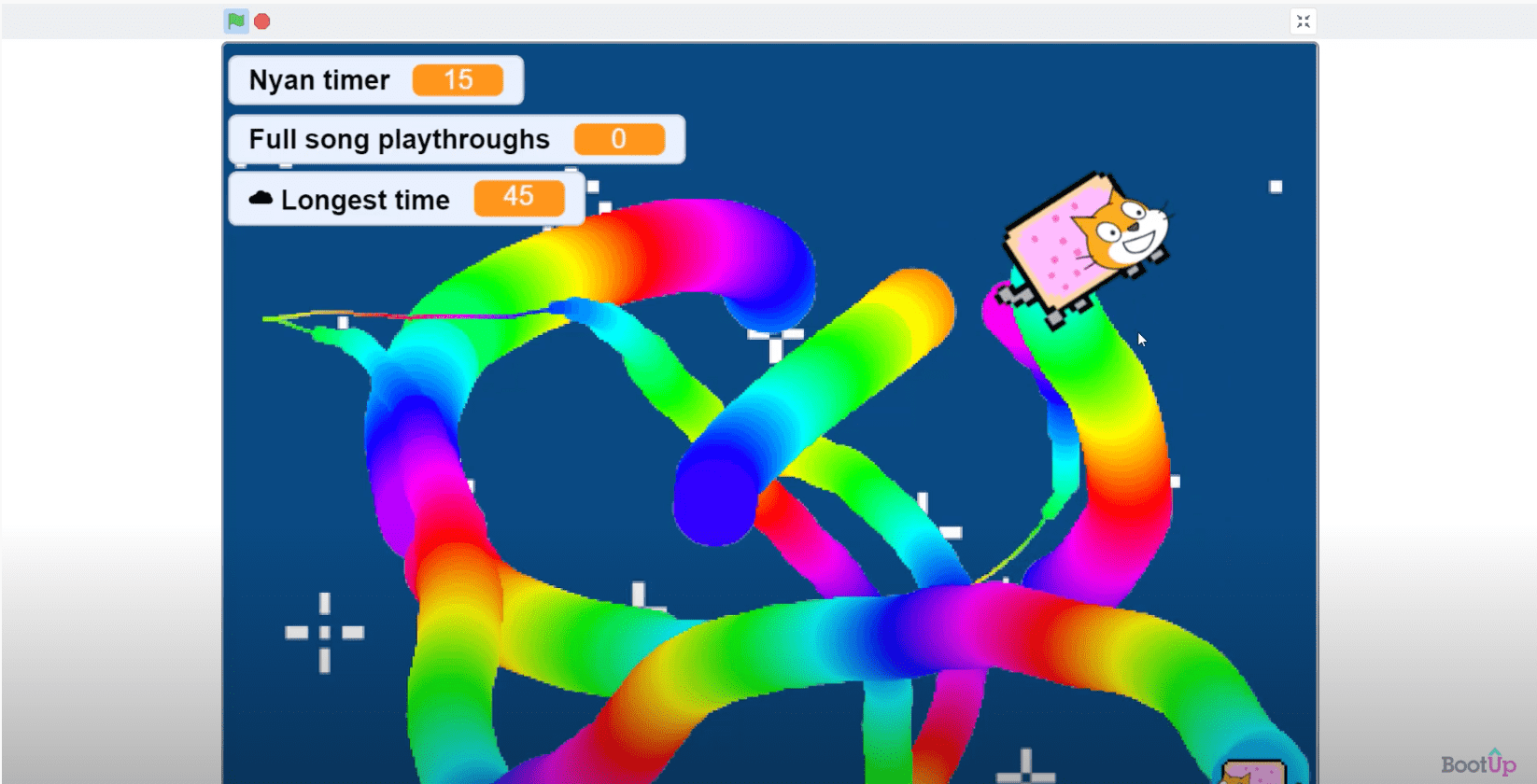
#21 Nyan Simulator 🟨
Experience: 1st year, 3rd quarter
Coders create a Nyan Cat simulator that causes a cat to fly around the screen while drawing rainbows. The purpose of this project is to introduce a variety of pen blocks by combining them with previous understandings.
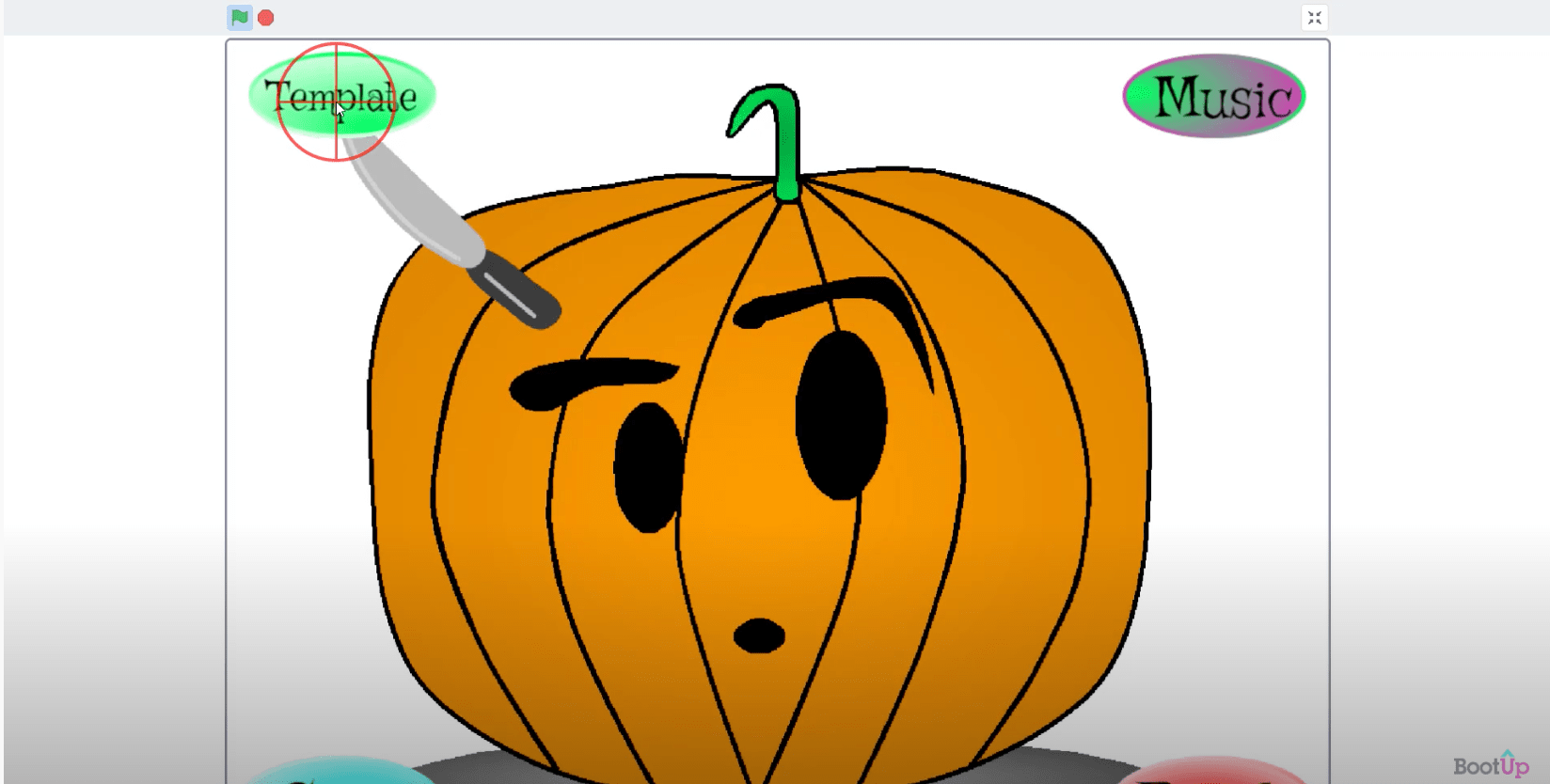
#22 Pumpkin Carver 🟨
Experience: 1st year, 3rd quarter
Coders create a pumpkin carver simulator that allows users to “carve” a pumpkin with their mouse. The purpose of this project is to introduce creating a drawing application using pen blocks by combining them with previous understandings.
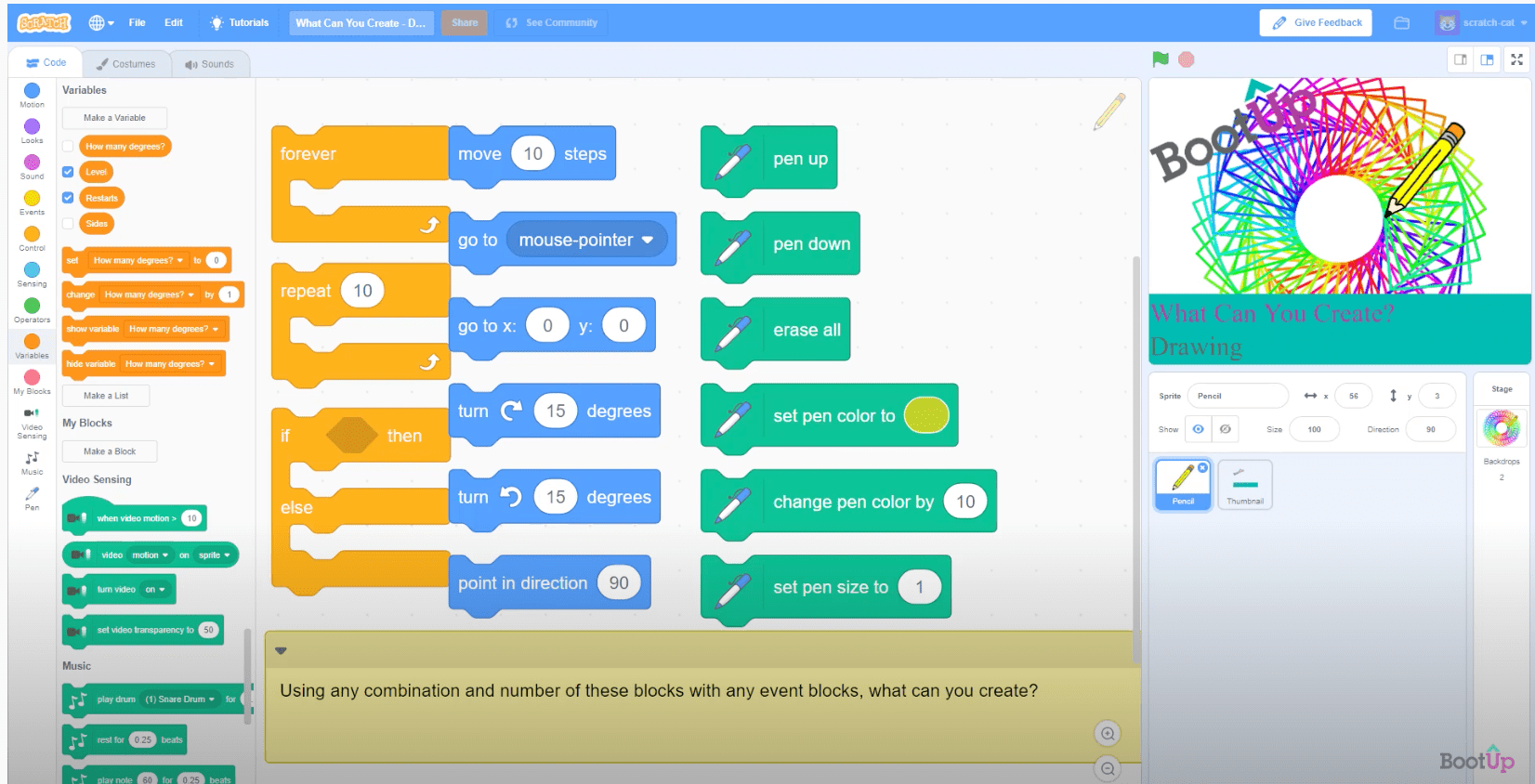
#23 What Can You Create? Drawing 🟨
Experience: 1st year, 3rd quarter
This challenge asks coders to use a limited selection of block types within an unlimited number of sprites to create art. The purpose of this challenge is to encourage coders to think creatively about block combinations to better understand algorithmic sequences.
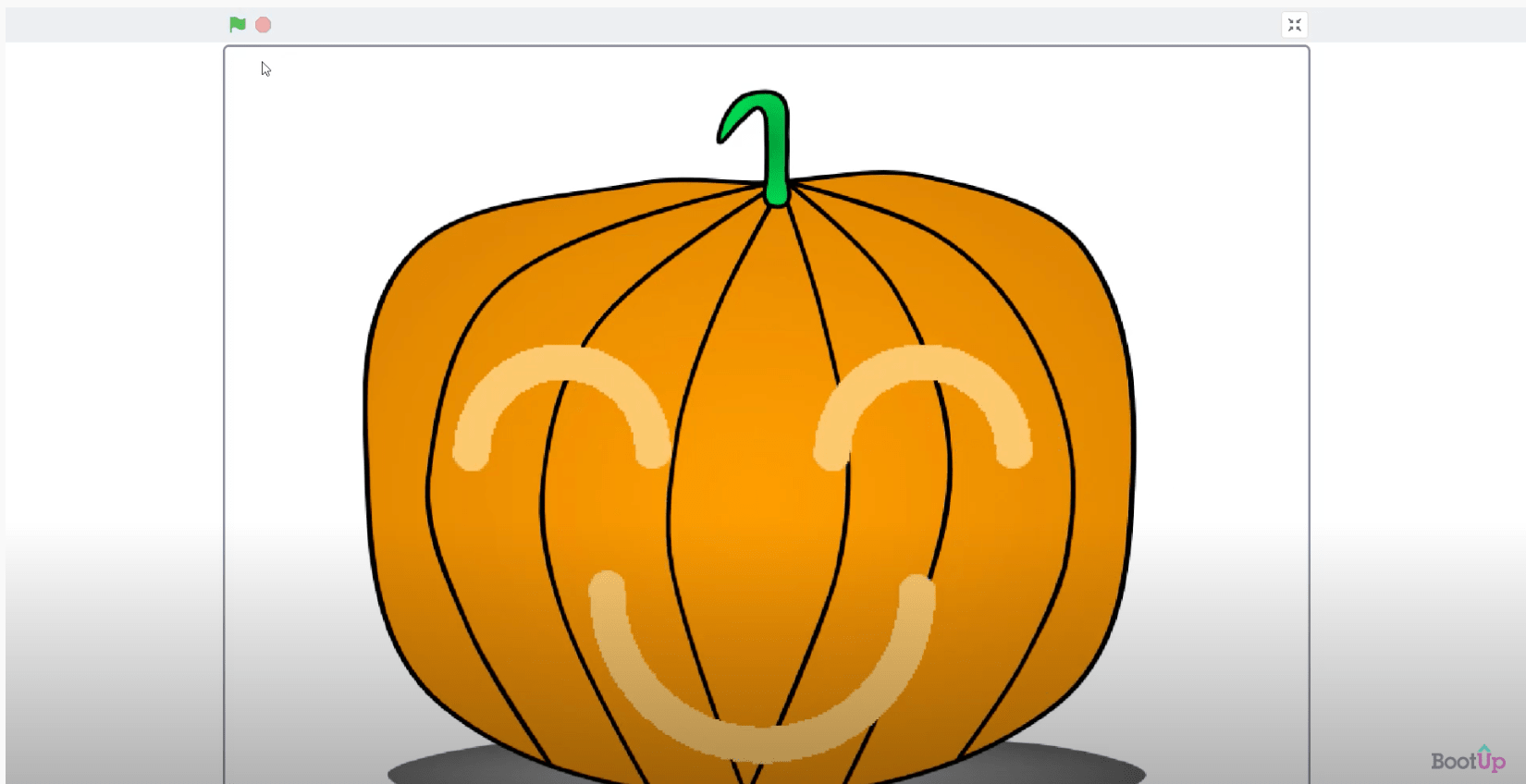
#24 Carve a Pumpkin with Code 🟨
Experience: 1st year, 3rd quarter
Coders continue to develop their understanding of pen blocks by creating algorithms to carve pumpkins. This purpose of this project is to reinforce understandings of how to draw shapes with code.
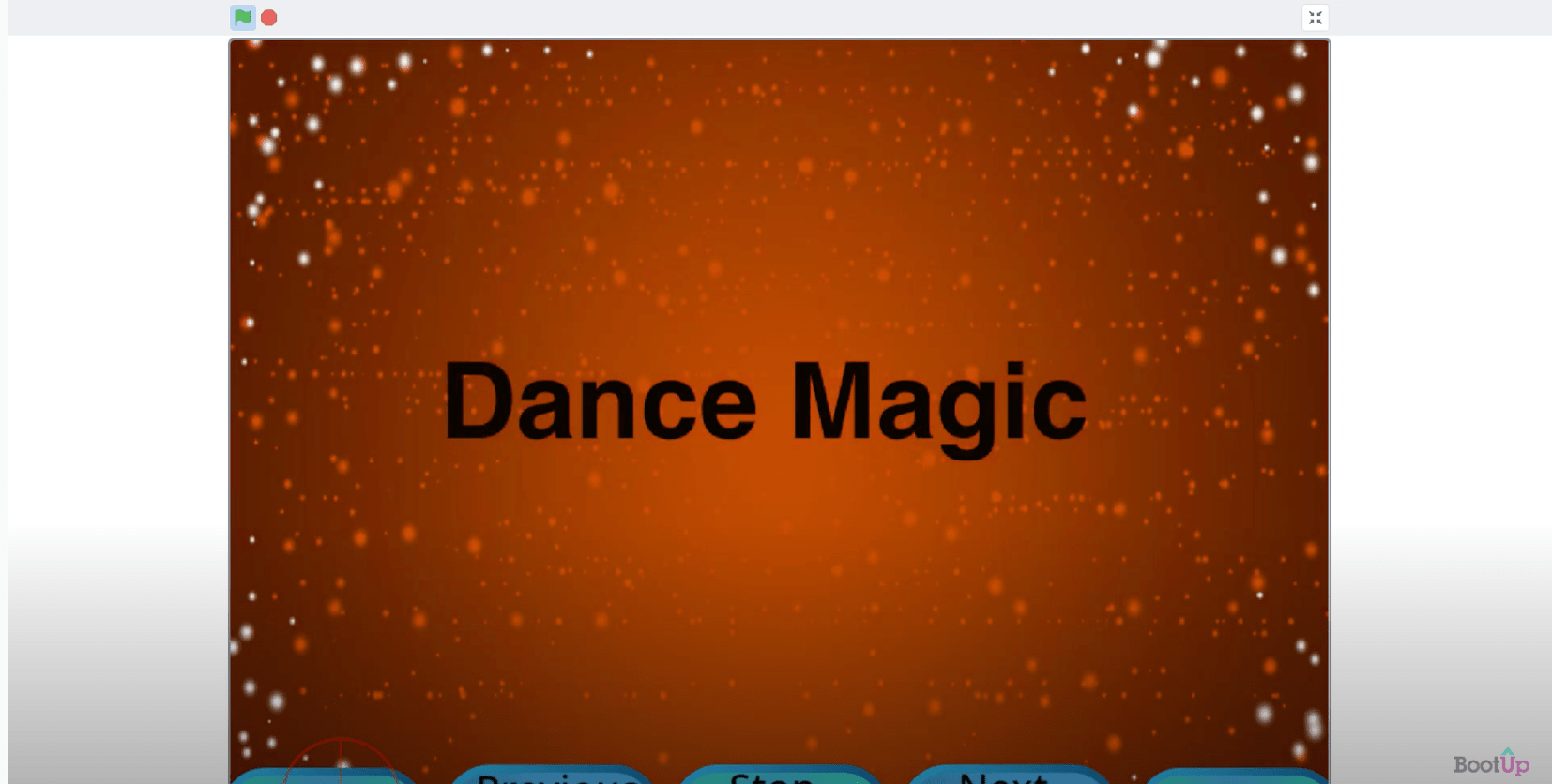
#25 Music Player 🟨
Experience: 1st year, 3rd quarter
Coders combine their previous understandings of creating interactive buttons to create a music player with multiple buttons. The purpose of this project is to reinforce understandings of modularity by combining previous understandings within a new context.
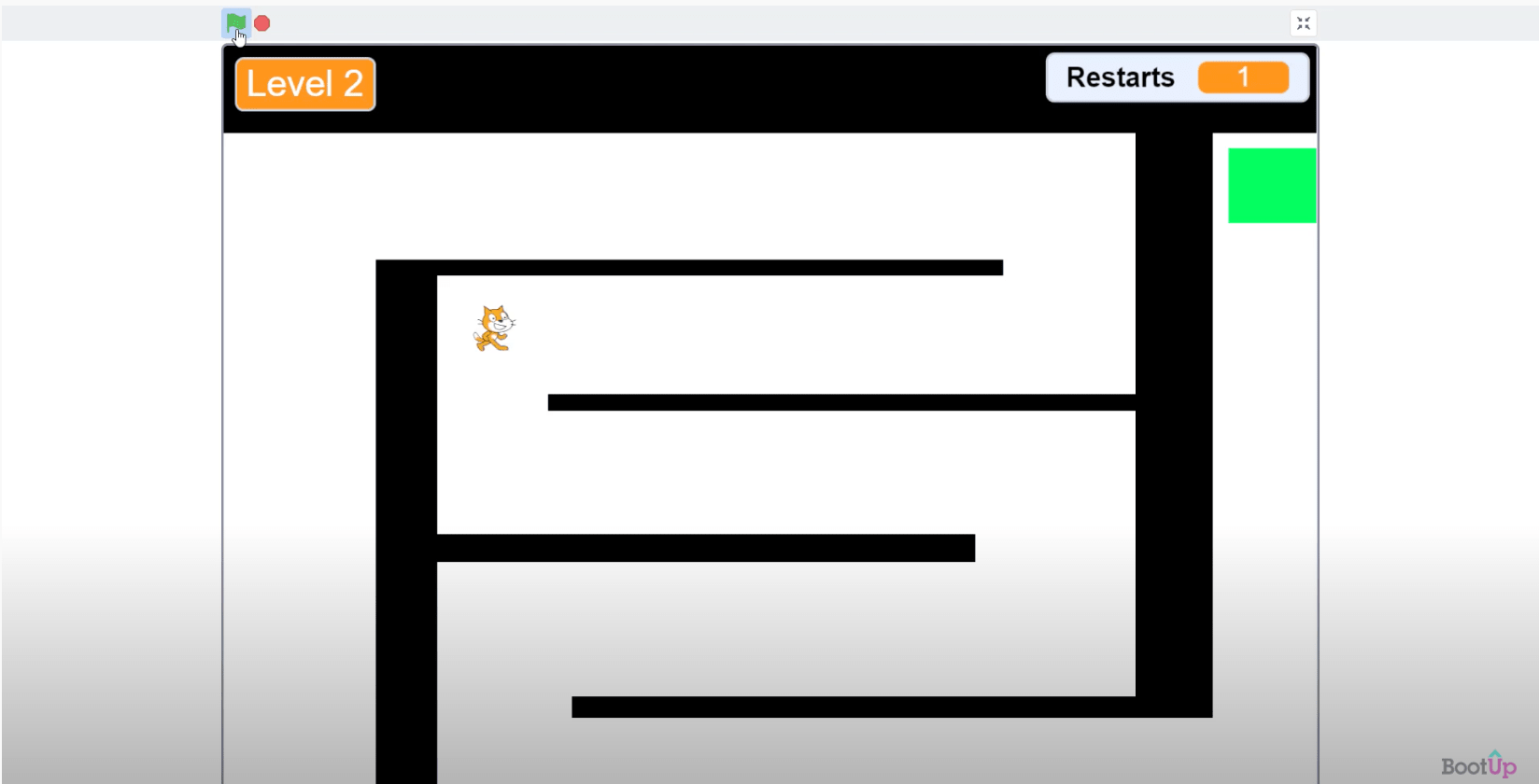
#26 Blinking Maze Game 🟨
Experience: 1st year, 3rd quarter
Coders create a player controlled blinking maze game with multiple, custom levels. The purpose of this project is to reinforce understandings of the previous maze game, while introducing new mechanics.
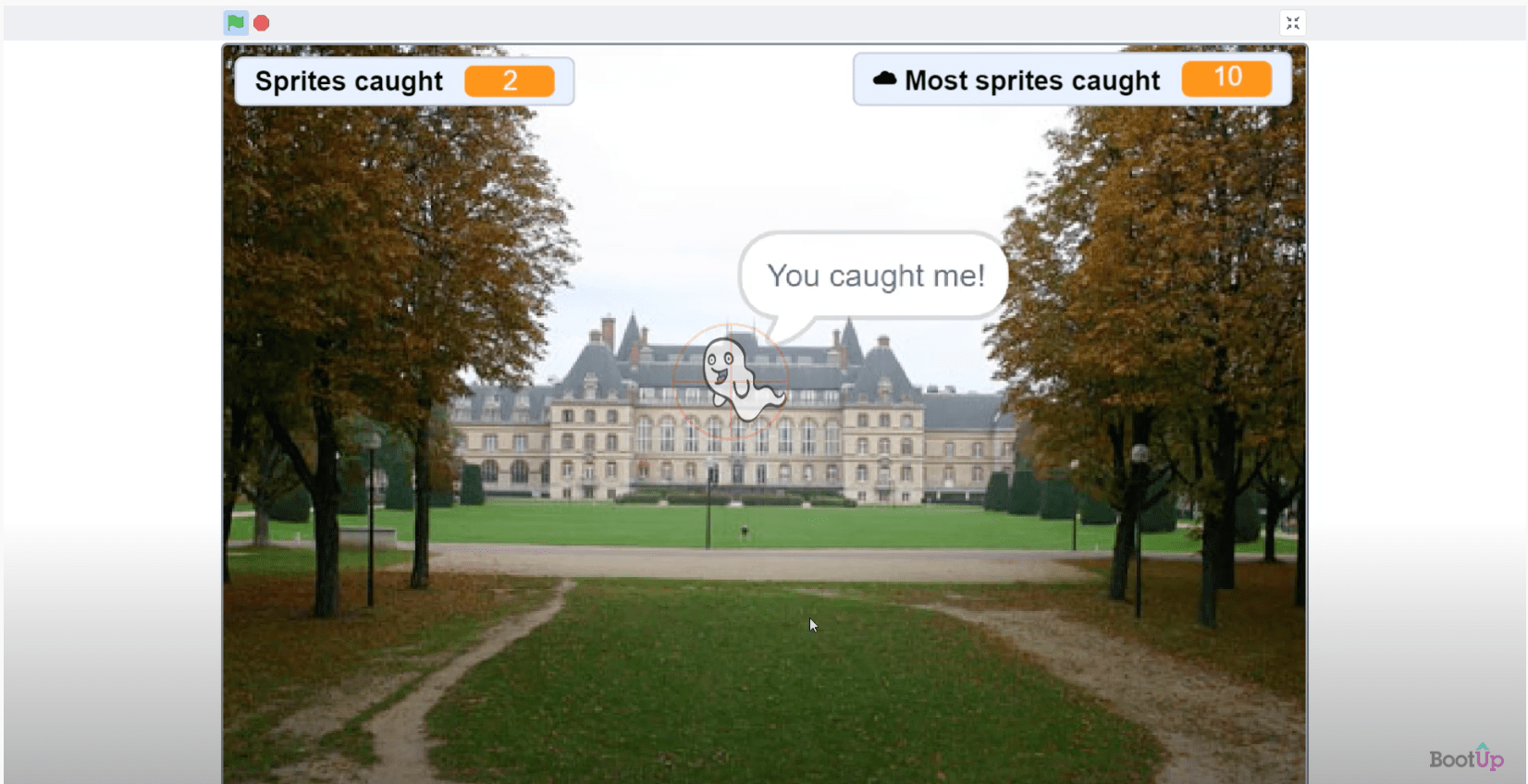
#27 Sprite Catcher 🟨
Experience: 1st year, 3rd quarter
Coders combine their understandings from previous projects to create a sprite catcher game. The purpose of this project is to reinforce understandings of modularity in a new context.
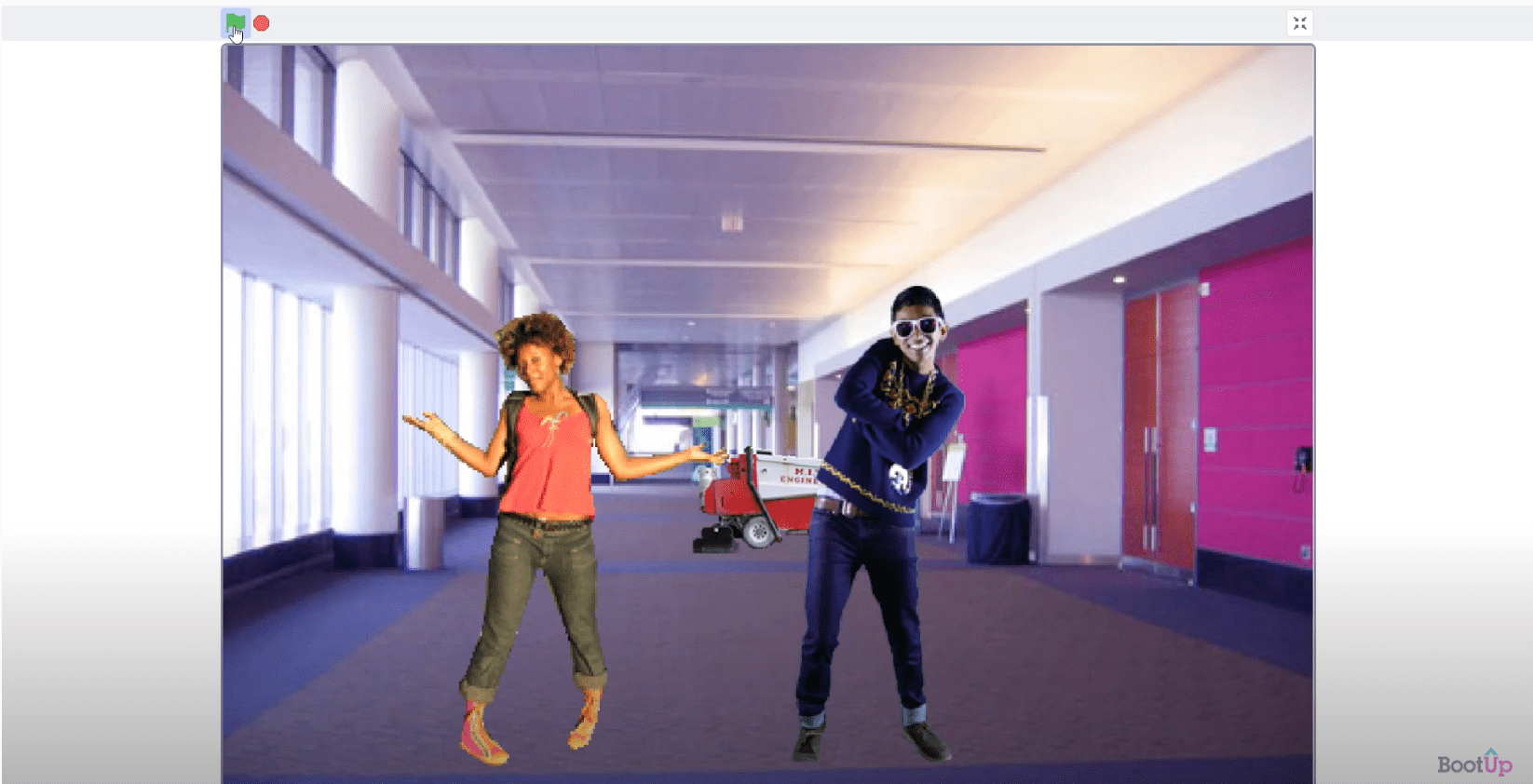
#28 Animate a Joke 🟨
Experience: 1st year, 3rd quarter
Coders combine understandings from several prior projects to animate a joke. The purpose of this project is to reinforce prior understandings with a focus on modularity.
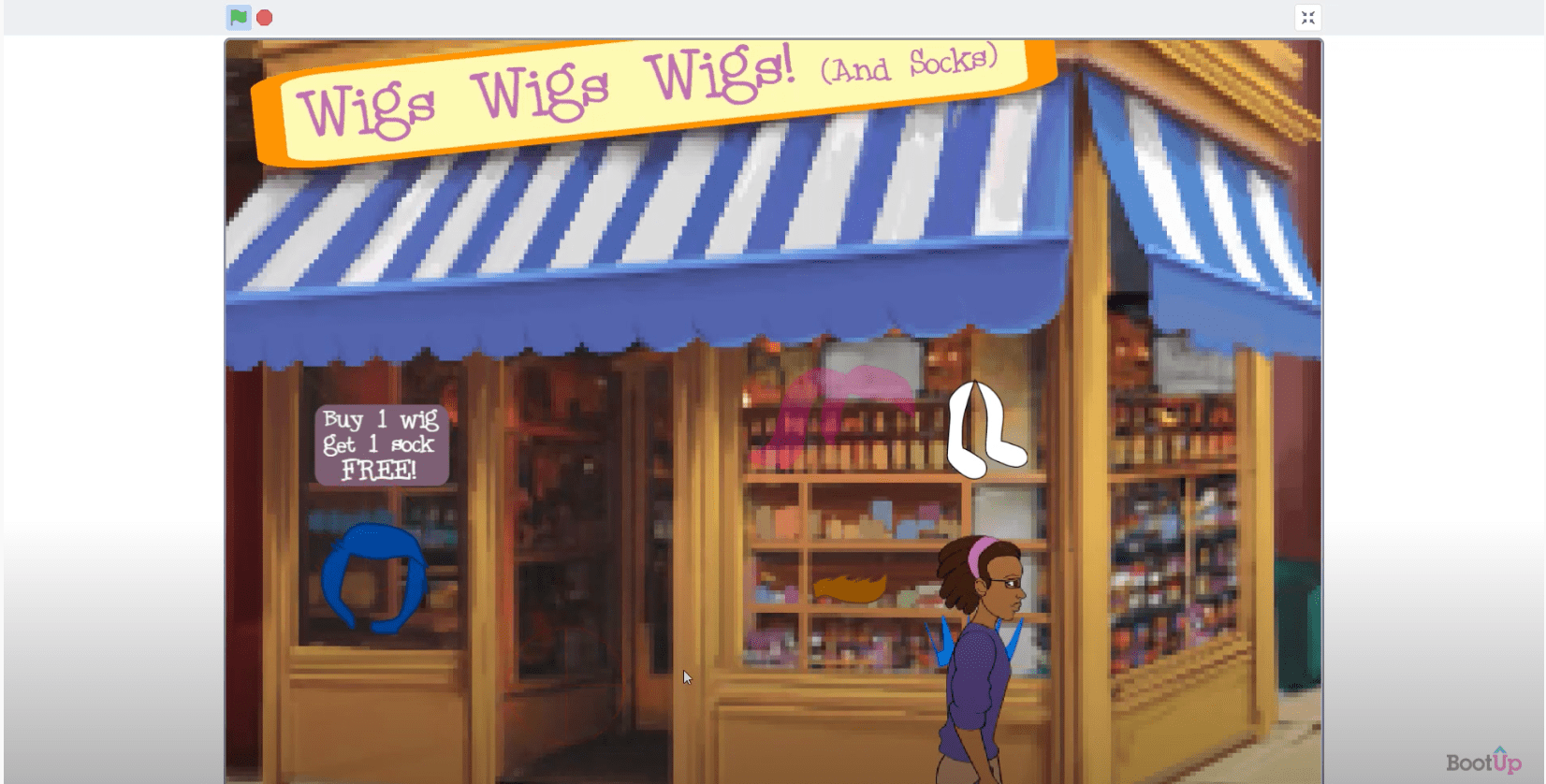
#29 Interactive Store Display 🟨
Experience: 1st year, 3rd quarter
Coders combine their understandings from previous projects to storyboard and create an interactive story display. The purpose of this project is to storyboard a project, apply their understandings into a project of interest, and experiment with new tools and blocks.

#30 Superhero(ine) Project 🟡
Experience: 1st year, 3rd quarter
Coders select from a variety of starter questions, storyboard their superhero(ine) project, then code a story or game. The purpose of this synthesis project is to storyboard a project and then apply their understandings into a project of interest.
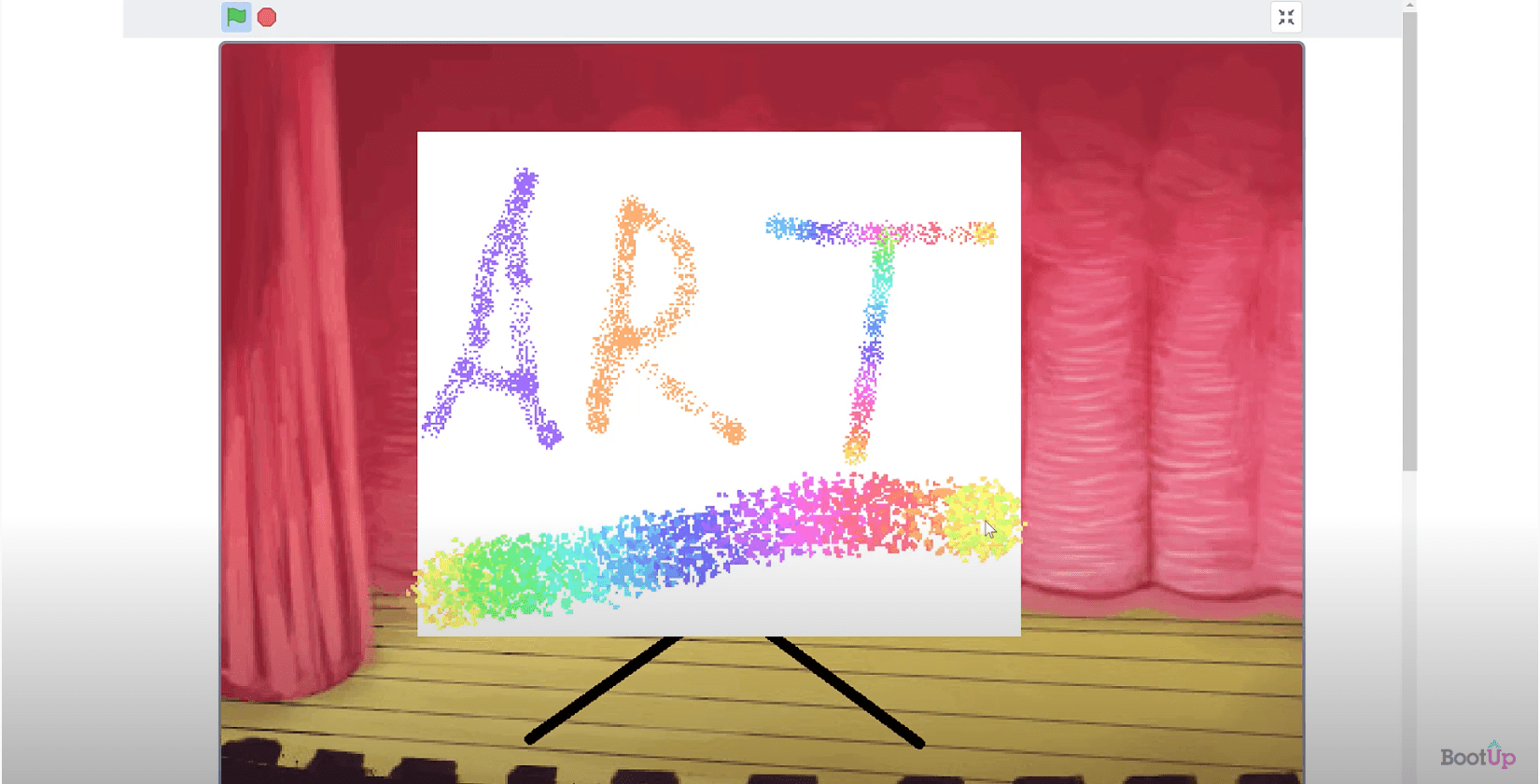
#31 Street Art 🟡
Experience: 1st year, 4th quarter
Coders create a spray paint simulator that allows users to create their own artwork. The purpose of this project is to introduce the stamp block and reinforce previous understandings.
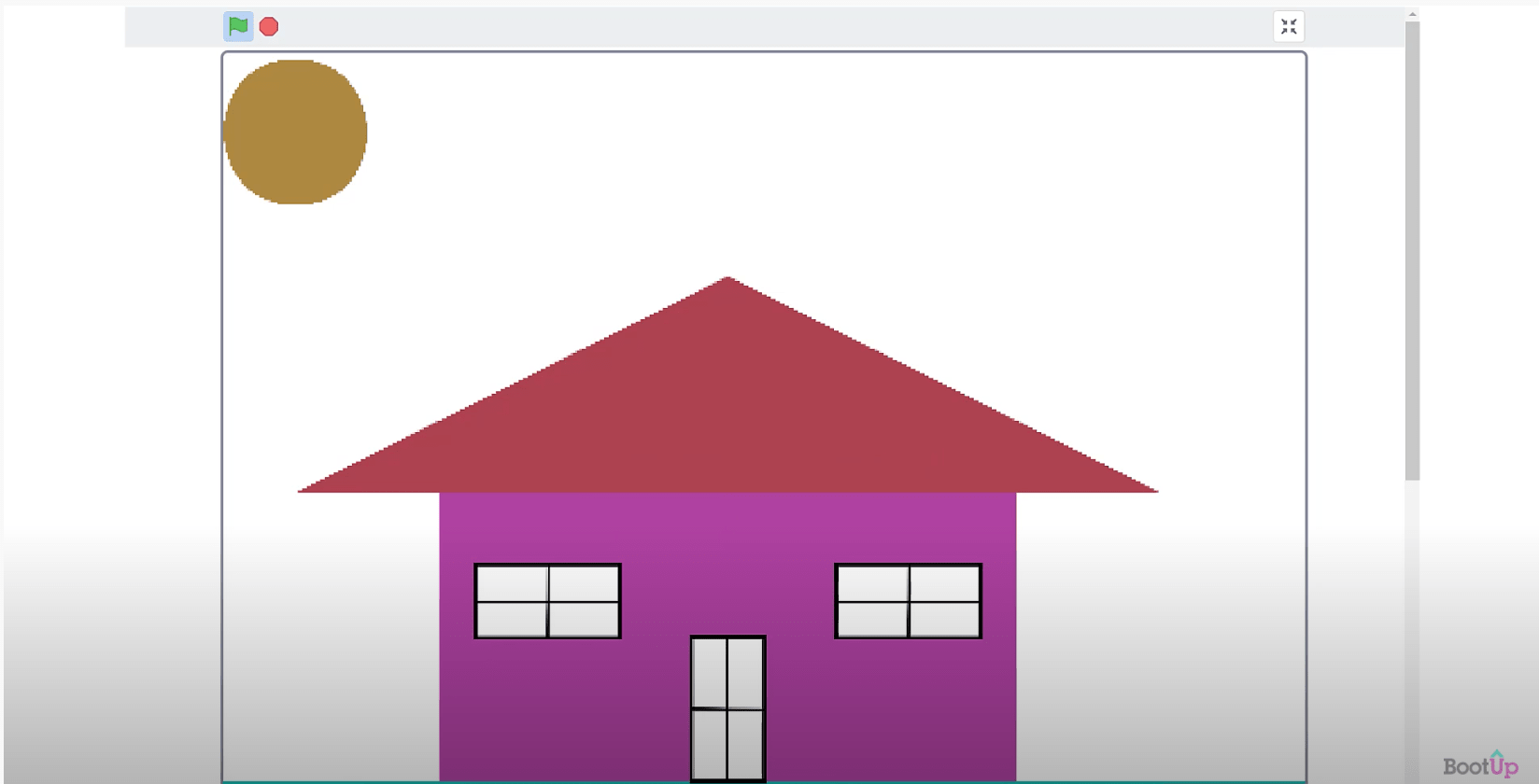
#32 Architect Simulator 🟡
Experience: 1st year, 4th quarter
Coders combine their previous understandings of using pen blocks to create an app that allows users to create architecture with blocks. The purpose of this project is to reinforce understandings of modularity and user interaction by combining previous understandings within a new context.
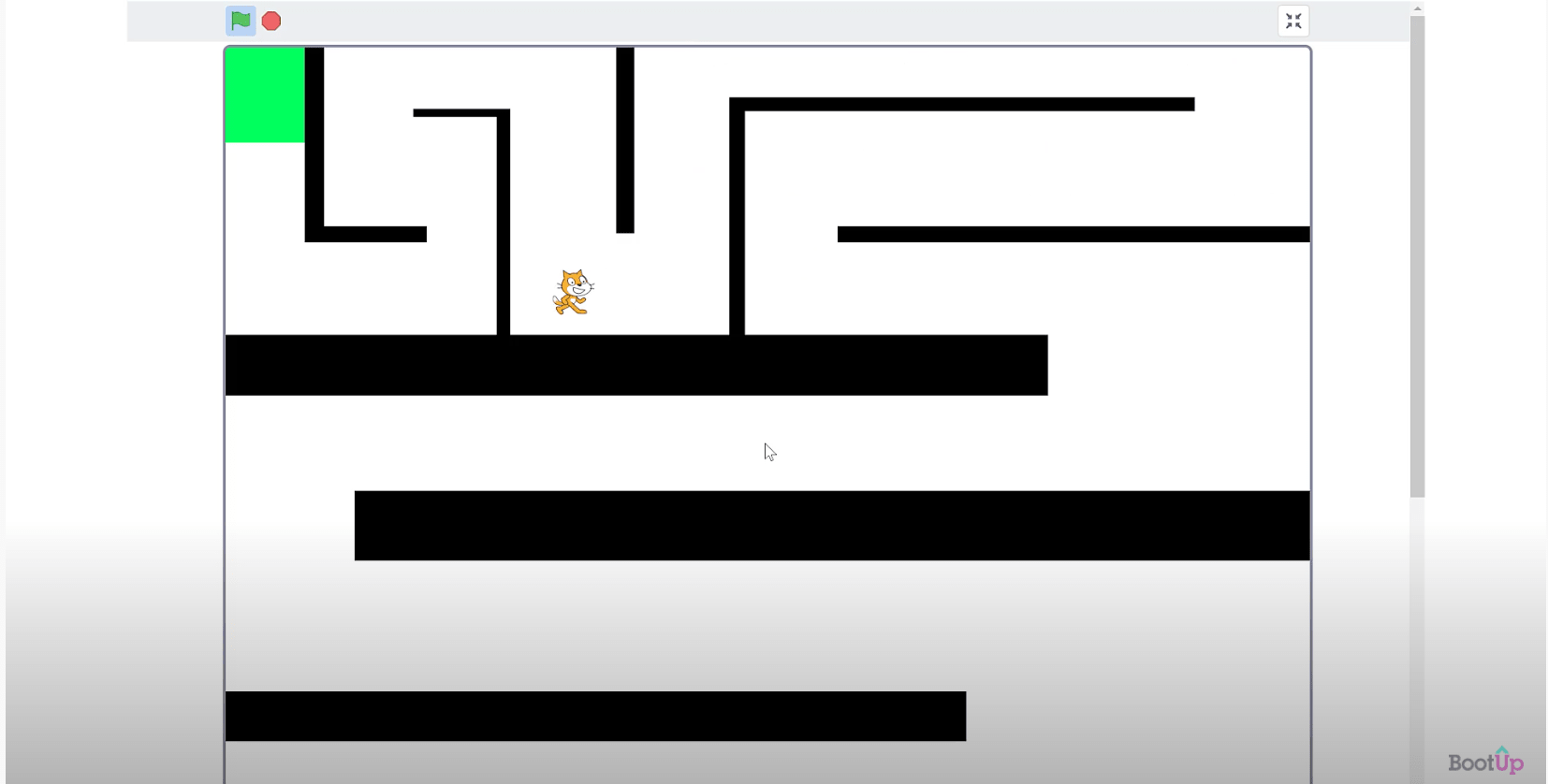
#33 Jump Scare Maze Game 🟡
Experience: 1st year, 4th quarter
Coders create a player controlled maze game with a funny jump scare that appears on one of the levels. The purpose of this project is to combine understandings from prior projects to create a game with a funny jump scare.
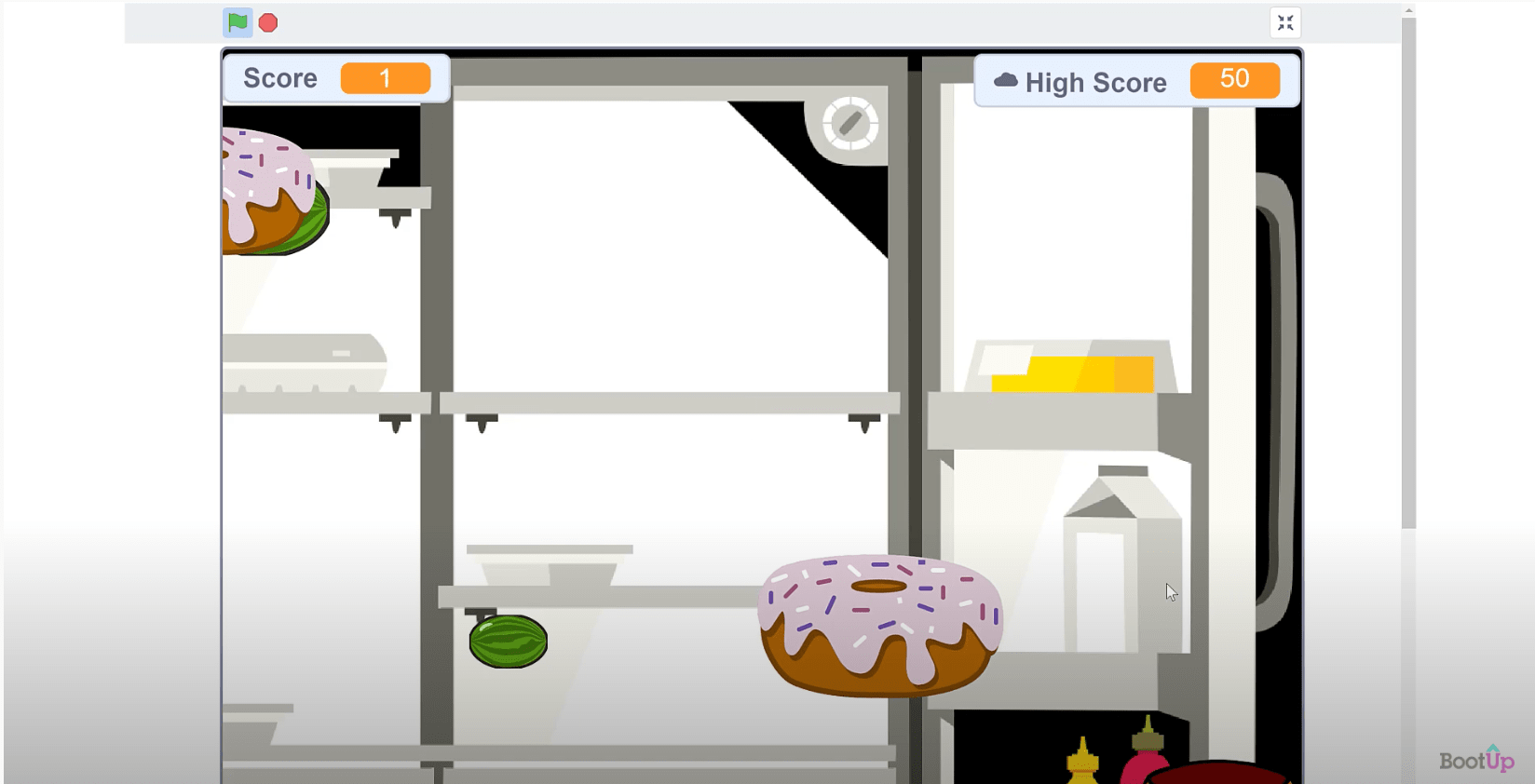
#34 Food Catcher 🟡
Experience: 1st year, 4th quarter
Coders create a food catcher game that keeps track of the player’s score. The purpose of this project is to introduce variables to keep track of a player’s score.
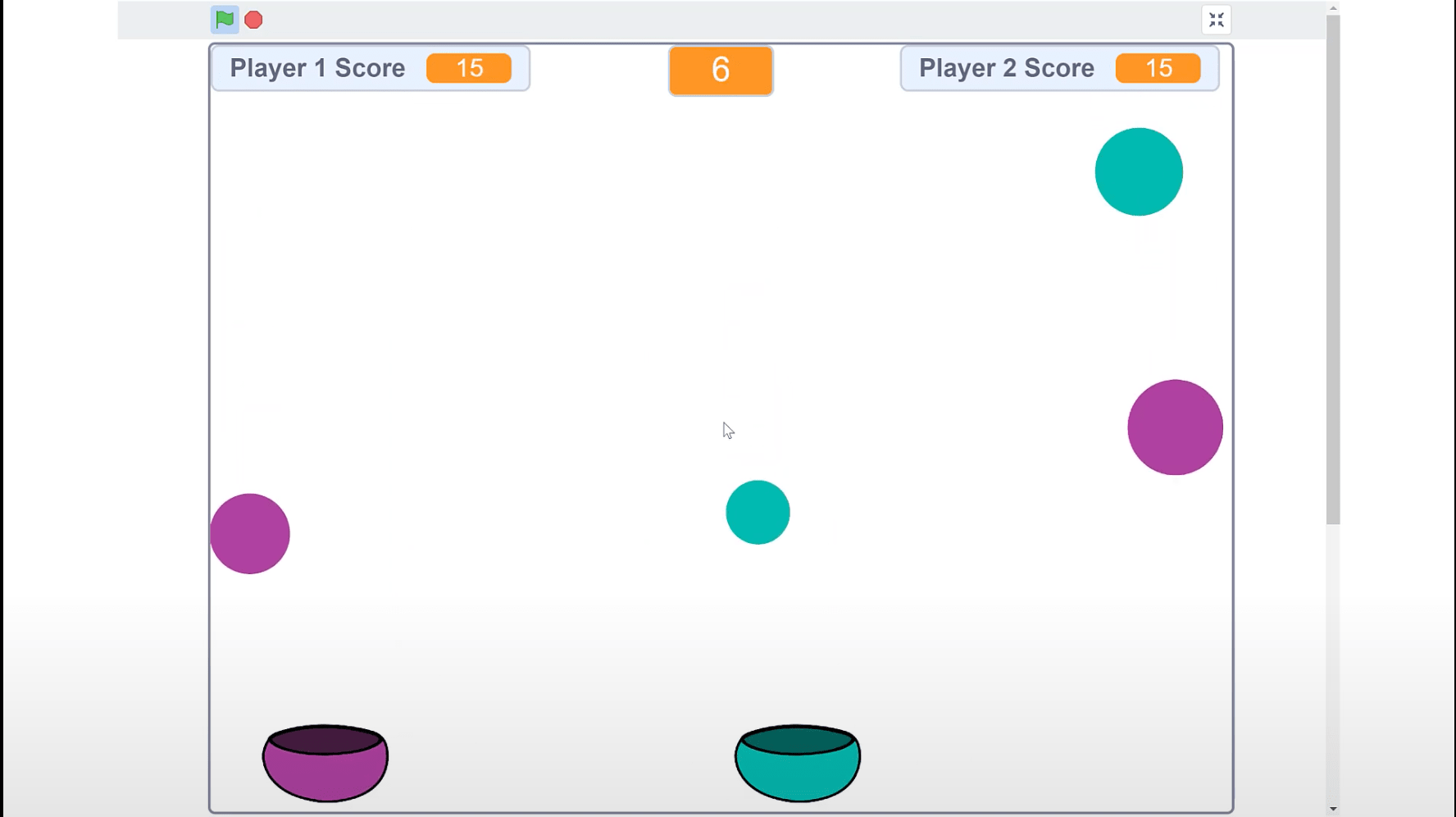
#35 Don't Catch Mine! 🟡
Experience: 1st year, 4th quarter
Coders create a competitive game that keeps track of each player’s score. The purpose of this project is to collaboratively reinforce variables to keep track of each player’s score. Note: this project builds off the understandings introduced in “Food Catcher.”
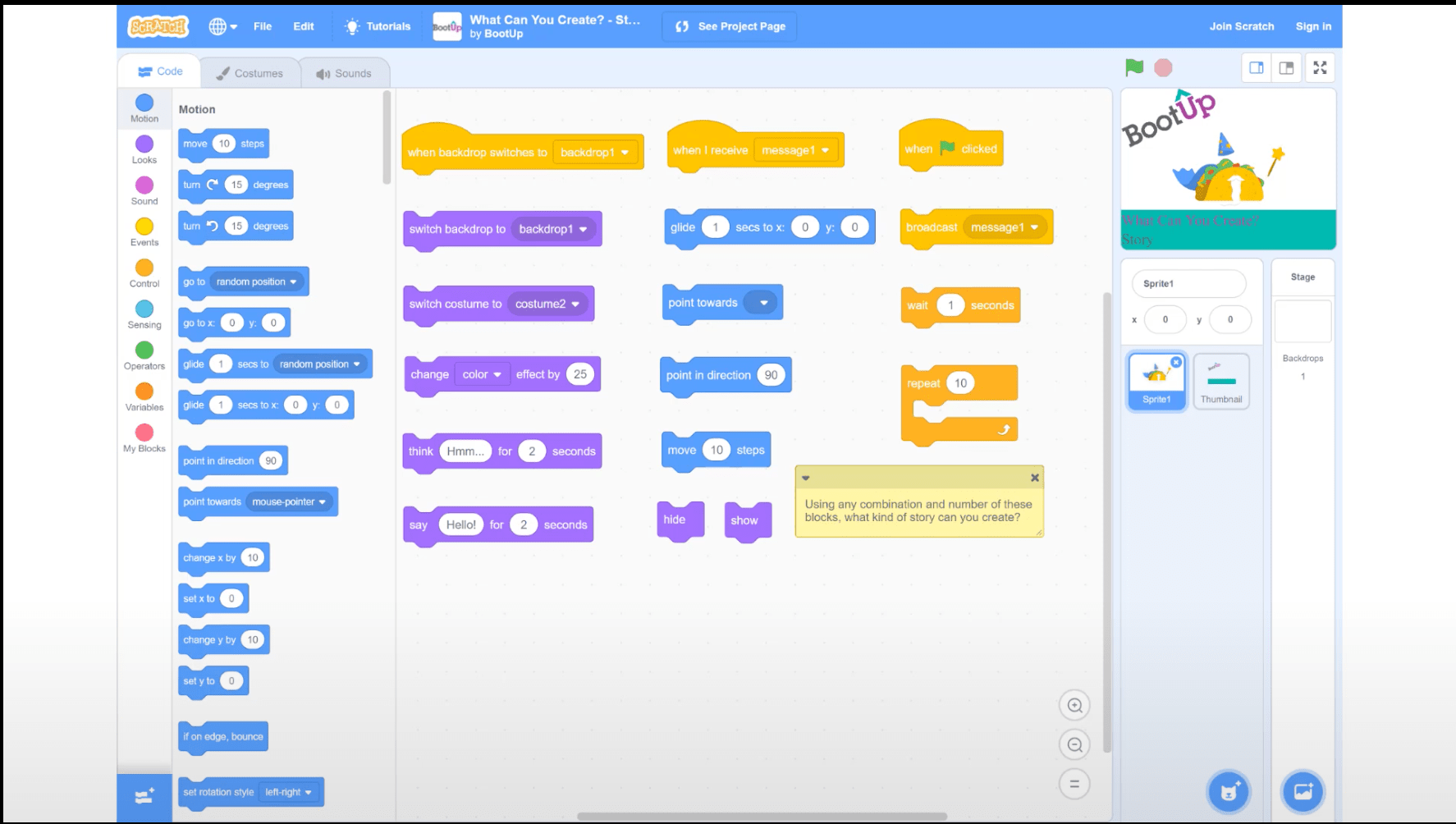
#36 What Can You Create? Story 🟡
Experience: 1st year, 4th quarter
This challenge asks coders to use a limited selection of block types within an unlimited number of sprites to create a story with multiple scenes. The purpose of this challenge is to encourage coders to think creatively about block combinations to better understand algorithmic sequences.
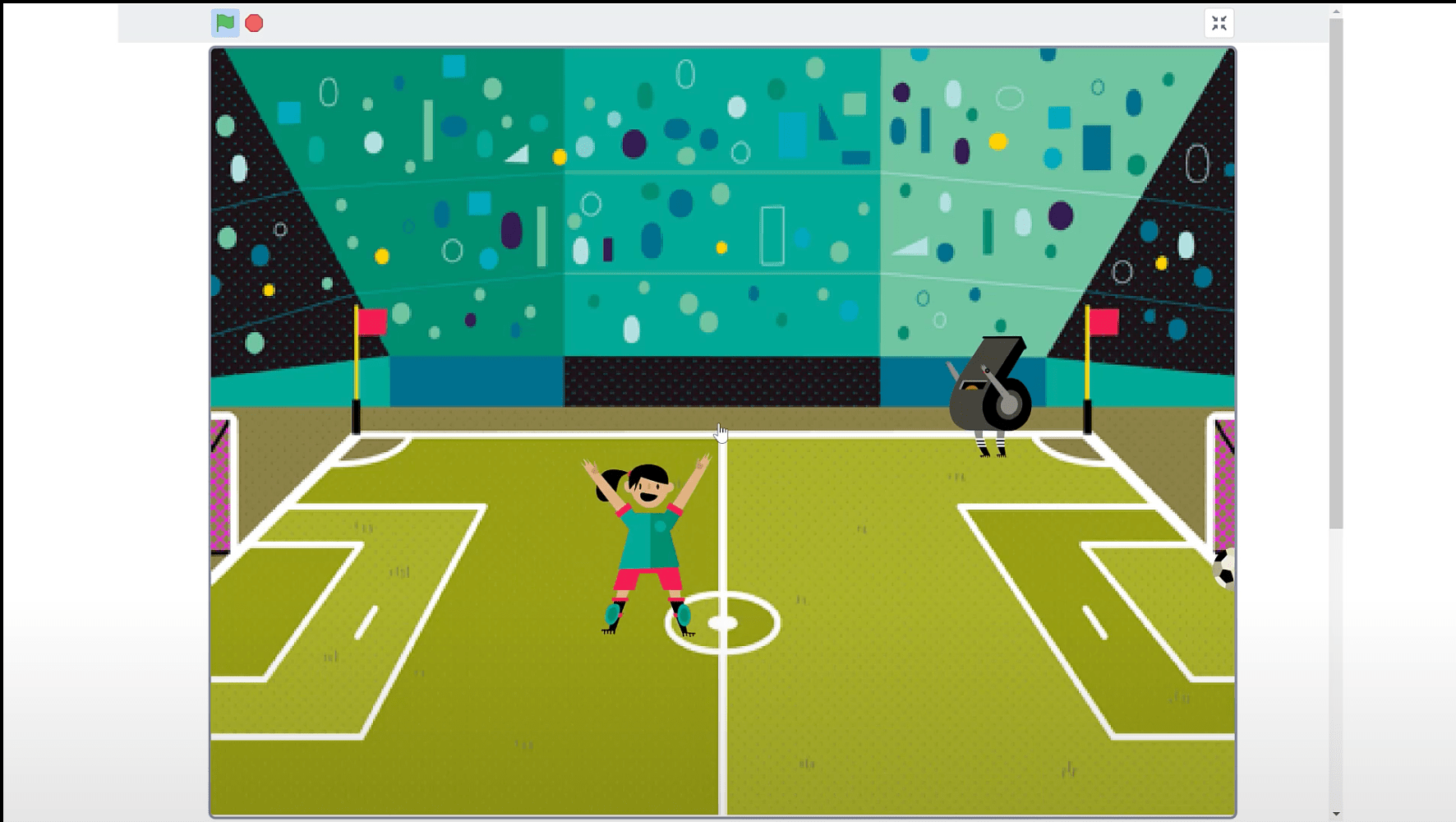
#37 It's Alive! 🟡
Experience: 1st year, 4th quarter
Coders learn how to add costumes to a sprite to simulate lifelike movements or animations in a scene or short story. The purpose of this project is to reinforce understanding of the image editor while learning how to better simulate motion/animations when a sprite has a limited number of costumes.
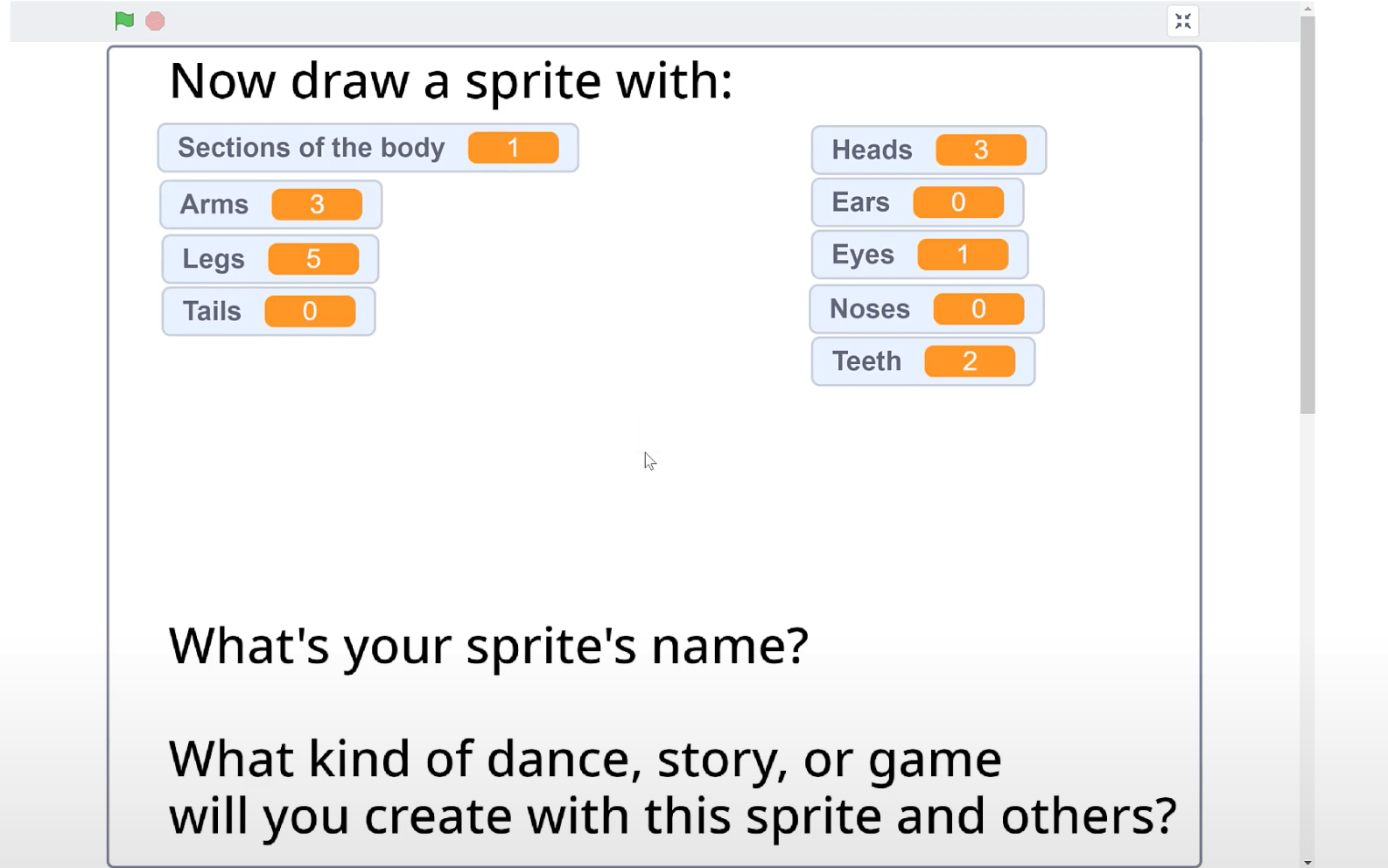
#38 Random Sprite Challenge 🟡
Experience: 1st year, 4th quarter
Coders create a randomly generate sprite and then review how to add costumes to a sprite to simulate lifelike movements or animations in a scene or short story. The purpose of this project is to learn how to better simulate motion/animations of a newly created sprite.
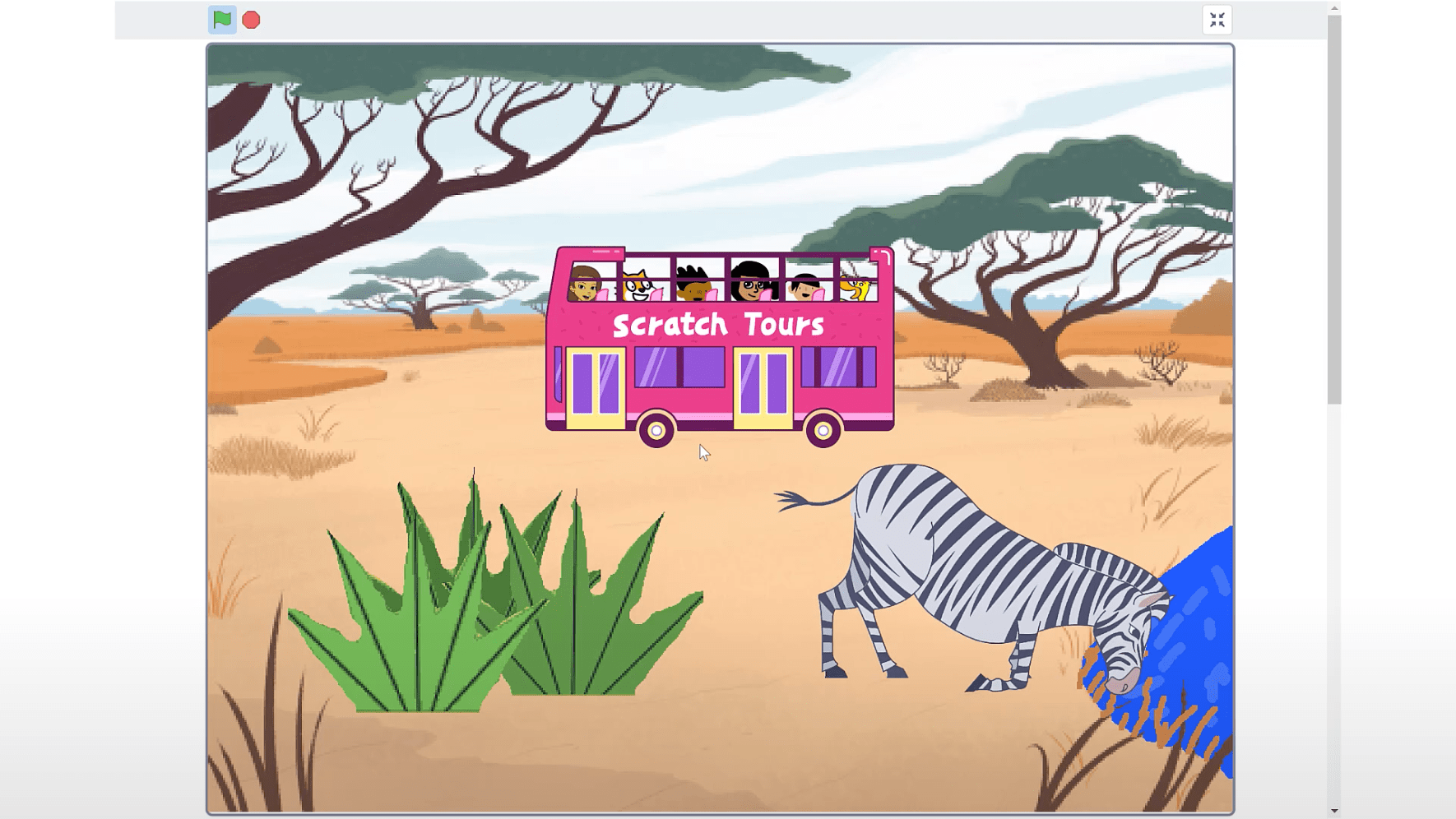
#39 Pass It On (Story Starters) 🟡
Experience: 1st year, 4th quarter
Coders engage in a multi-day project where they create or remix an introduction to a short story. The short version of this project is completed by one coder, while the longer version involves coders passing their incomplete project to a peer, who adds to their story. The purpose of this project is to encourage coders to communicate and learn from their peers.
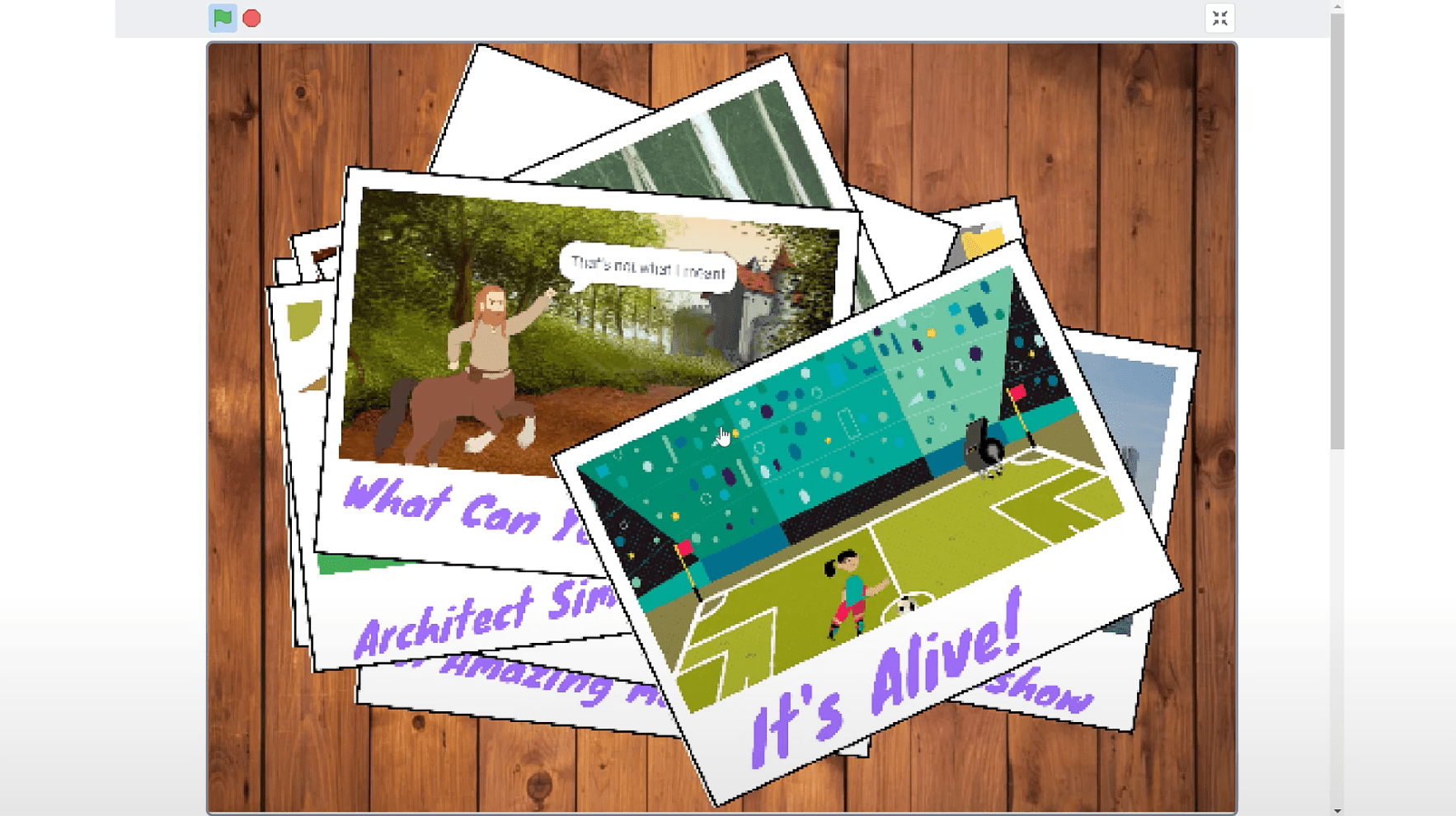
#40 Looking Back 🟡
Experience: 1st year, 4th quarter
Coders combine their understandings from previous projects to create a scrapbook synthesis project that reflects on what they did/learned over the year. The purpose of this synthesis project is to reflect on and synthesize prior learning, while also learning how to simulate Polaroid pictures developing.
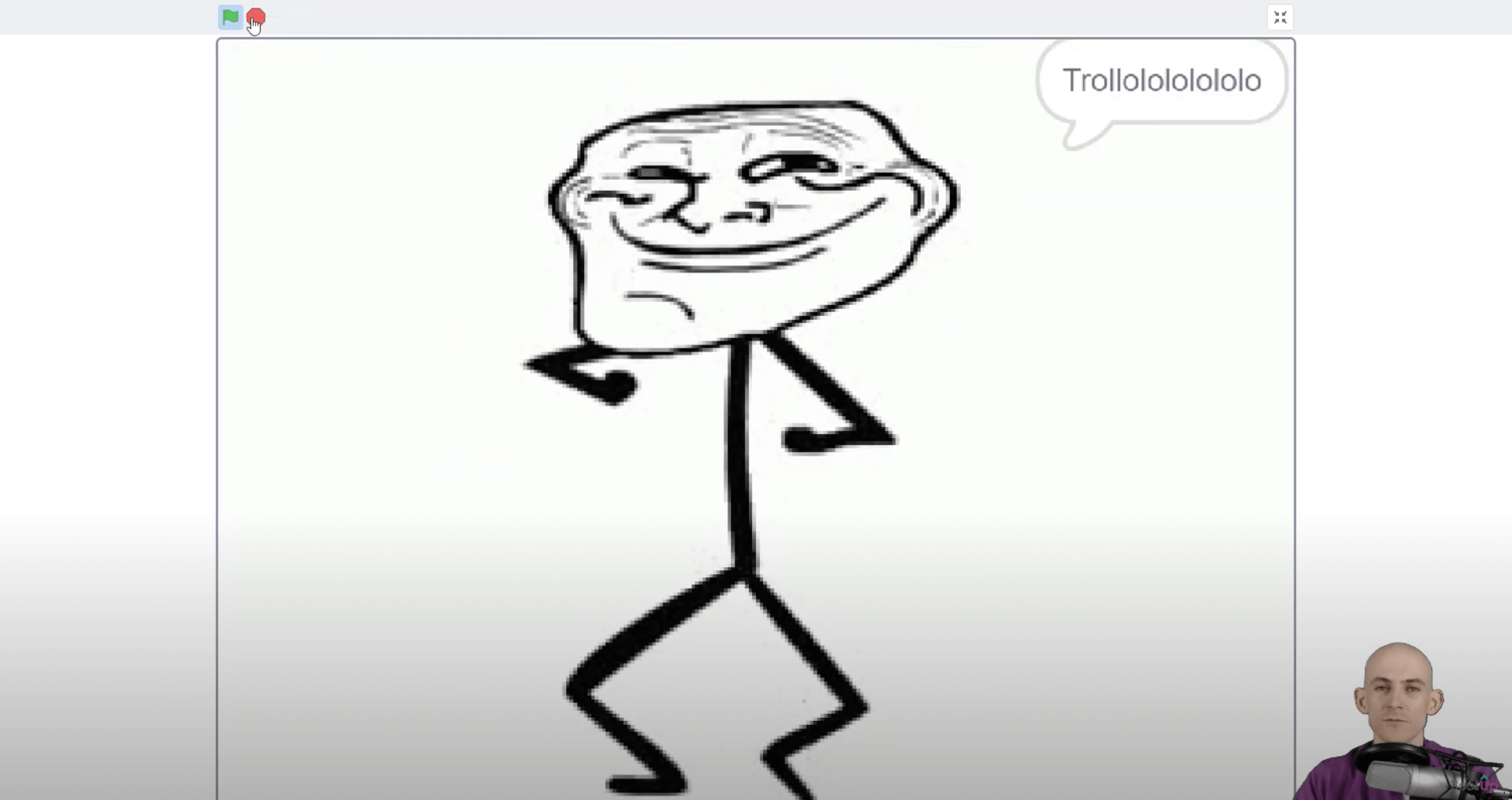
#41 April Fools Joke - A Scratch Prank 🟡
Experience: 1st year, 1st quarter
Have some fun on one of the funniest day's of the year.
©2020 - 2025 BootUp PD, Inc. All rights reserved. BootUp is an IRS Section 501(c)(3) organization.
Unless otherwise indicated, all materials on these pages are copyrighted by BootUp PD, Inc. No part of these pages, either text or image may be used for any purpose other than personal use. Therefore, reproduction, modification, storage in a retrieval system or retransmission, in any form or by any means, electronic, mechanical or otherwise, for reasons other than personal use, is strictly prohibited without prior written permission.
